Emerald Textiles’ Otay Mesa building purchased
SAN DIEGO — A group affiliated with the ownership of commercial healthcare laundry Emerald Textiles has purchased the large Otay Mesa facility that houses its processing plant, the company reports.
Last year, the commercial healthcare laundry says it increased its footprint by 45,000 square feet when it took the remaining space in the building. The expansion was required based on increasing demand for the company’s services. Emerald CEO Tom Gildred says that purchasing the building was the next logical step.

“We are thrilled with the growing appetite of the Southern California healthcare market for Emerald’s products and services,” Gildred says. “We believe our growth has been fueled by our commitment to cleanliness along with our focus on taking care of our customers and employees.”
Emerald says it utilizes the most advanced technology and provides a higher standard of cleanliness, industry compliance and customer satisfaction. ALN
Laundry employing people with disabilities upgrades for better production, efficiency
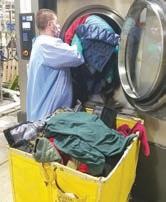
bers. For years, the laundry was in the red, and was a few months from being nearly inoperable.
BY HALEY JORGENSEN
YAKIMA, Wash. — Founded in June 1964, Yakima Specialties Inc. is a nonprofit organization that trains and employs adults with disabilities, empowering them to achieve their highest potential in life and in the workplace.
Yakima Specialties is not governmentfunded. Instead, it operates like a business. It is home to Yakima Specialties Janitorial, Yakima Specialties Woodshop and Yakima Specialties Laundry, and the Supported Employment department. The four departments serve more than 100 individuals per year through the efforts of 30 staff members.
Operating like a business can create some challenges, as it did for the 30-year-old commercial laundry employing 32 team mem-
For the first time in 30 years, after some equipment upgrades, Yakima Specialties Laundry is meeting bottom-line expectations. Director Tom Gannon credits this success to hardworking team members, a compassionate executive board, and new soft-mount washers.
EQUIPMENT UPGRADE
The problem at Yakima Specialties Laundry? The laundry’s ailing hard-mount washers were suffering constant breakdowns.
“The laundry was at a crossroads,” says Gannon. “We had to replace equipment or shut down and displace 27 workers with disabilities.”
Instead, he encouraged Laundry Manager Sylvia Campbell to somehow maintain pro-


Creating effective wash formulas
Production
requirements, water quality, chemistry, more go into quality processing
BY MATT POE, EDITOR
CHICAGO — When Graham Skinner was general manager of laundry services at Mission Hospital in Asheville, N.C., he was always on the search for the most effective wash formulas.

“I looked for minimal end-user issues as it relates to stains, etc.,” he says. “These are time-consuming. I would pay more to have reductions in these areas. Cheapest price does not always produce the best outcome.”
In order to create those formulas to produce the best outcomes, Skinner worked sideby-side with his chemicals suppliers—and he looked for specific qualities in those suppliers.

Columnist at Large
Our experts offer their advice on fine-tuning operations to increase their PPOH.
(Image licensed by Ingram Publishing)
when they see areas for improvement in my facility.”
Skinner also looked for suppliers who
Disaster Planning
Develop an emergency response plan to get through a disaster and continue business.

DE CEM B ER 2017 Late News
Management www.americanlaundrynews.com INSIDE [4]
The Newspaper of Record for Laundry & Linen
See YAKIMA on Page 6
“I want my chemicals supplier to be a good steward of utilities,” he says. “I also want them to be an experienced professional. Tactfully and discreetly share best practices from their experience in the industry and other facilities
[18] See WASH on Page 6
In this issue, Eric Frederick looks at some of the most valuable laundry work: planning. [14]
Once close to shutting down, facility now adding business
Panel of Experts
A production worker at Yakima Specialties Laundry loads a new Continental E-Series washer with winter jackets in support of the “Coats for Kids” program. (Photos: Continental Girbau Inc.)
Venues familiar to past attendees selected for next four Clean Shows
ATLANTA — New Orleans, Atlanta, Orlando and Las Vegas.
Those are the locations of the next four Clean Shows as selected by the Executive Committee, reports show management company Riddle & Associates.
Morial Convention Center in New Orleans is the site for Clean 2019, as announced at Clean 2017 in Las Vegas. The show will take place June 20-23, 2019. This will be the sixth time New Orleans has hosted the Clean Show. Always a popular destination, the Clean Show has experienced positive attendance by decision makers, and the city is continually adding new restaurants and entertainment venues, says Riddle.
In addition, the Clean Show Executive Committee announced
the dates and locations through 2025, including:
• June 10-13, 2021, at Atlanta’s Georgia World Congress Center, which previously hosted the Clean Show in 1981, 1987 and 2015.
• May 18-21, 2023, at the Orange County Convention Center, Orlando, Fla., which previously hosted the Clean Show in 1999 and 2005.
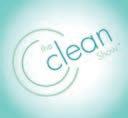
• June 9-12, 2025, at the Las Vegas Convention Center for the seventh time.
“The Clean Show Executive Committee is already working on hotel selection and educational content to build on the success of the most recent Clean Show in Las Vegas,” says Clean Show 2019 Chairman Joseph Ricci, TRSA
president and CEO. “By securing future Clean Show sites that offer both familiarity and distinctive opportunities to attract national and international decision makers across all market segments, we are ensuring the continued success of the Clean Show.”
The biennial Clean Show is the world’s premier exposition for the
Clean Show sites through 2025 announced Spartan Motors to build new all-electric walk-in van fleet for textile rental company
CHARLOTTE, Mich. — Spartan Fleet Vehicles and Services, a business unit of Spartan Motors Inc. which encompasses the Utilimaster® brand, has accepted and will fulfill a 20-unit order from AmeriPride Services, the company reports.
AmeriPride, a textile rental services and supply company, has contracted with Spartan for a walk-in van solution that integrates the Utilimaster body design with Motiv Power Systems’ electric vehicle (EV) propulsion solution.
The order is scheduled for delivery in early 2018, according to Spartan.
“Our focus on reducing the
carbon footprint of our delivery trucks demonstrates our commitment to the environment and the communities where we operate,” says Banny Allison, fleet services manager, AmeriPride Services Inc.
“We’re proud of that commitment and know that Spartan and Motiv will help us to continue our journey as a leader in environmental sustainability and our efforts to implement green technologies, while providing worldclass transport capability to our customers.”
For nearly a decade, Spartan says that Utilimaster has innovated for clients, spanning the alternative fuel and electric vehicle land- scape. The AmeriPride order further confirms Utilimaster’s expertise in the alternative fuel fleet vehicle space, the company says.

Spartan says it began working with AmeriPride and Motiv in mid-2017 on this particular electric powertrain walk-in van concept. The vehicle and subsequent 20-unit fleet order will have a range of 85 miles on a full charge and up to 20% gradeability.
“The AmeriPride EV van characterizes the strategic approach we take in the design of our upfit packages—listen to the customers’ needs and expectations and design a unique package to exceed them,” says Daryl Adams, president and CEO of Spartan Motors. “Strategic alliances with Motiv and others demonstrate our ability to innovate and advance the markets we serve and allow us to best serve customers like AmeriPride.
“Couple these strategic partnerships with our 35-year history
laundry, drycleaning and textile services industry. It features an educational program and working demonstrations of equipment and products for all segments of the industry, and draws exhibitors and attendees from around the world, typically attracting nearly 13,000 visitors from over 100 countries and overseas territories.
Executives of the five Clean Show sponsoring associations comprise the Clean Executive Committee. Sponsors are the Association for Linen Management (ALM), Coin Laundry Association (CLA), Drycleaning & Laundry Institute (DLI), Textile Care Allied Trades Association (TCATA), and TRSA, the association for linen, uniform and facility services. ALN
Publisher
Charles Thompson
Phone: 312-361-1680
E-Mail: cthompson@ ATMags.com
Associate Publisher/ National Sales Director



Donald Feinstein
Phone: 312-361-1682
E-Mail: dfeinstein@ ATMags.com
Editorial Director
Bruce Beggs
Phone: 312-361-1683
E-Mail: bbeggs@ ATMags.com
Editor
Matt Poe
Phone: 231-740-2842
E-Mail: mpoe@ ATMags.com
Production Manager Roger Napiwocki
Digital Media Director
Nathan Frerichs
Phone: 312-361-1681
E-Mail: nfrerichs@ ATMags.com
Advisory Board
Jim Buik • Greg Gurtler
Phil Hart • Janice Larson
Tom Marks • Gerard O’Neill Richard Warren
Main Phone: 312-361-1700 Fax: 312-361-1685
Subscriptions
x100
U.S. 1 year $46.00; 2 years
Foreign, 1 year $109.00; 2 years $218.00. Single copies: U.S. $9.00; Foreign $18.00.
Published by American Trade Magazines LLC, 566 West Lake Street, Suite 420, Chicago, IL 60661. Periodicals postage paid at Chicago, IL, and at additional mailing offices.
as a leading fleet provider, and it’s no secret why Utilimaster and Spartan are in the optimal position to serve the growing alternative fuel market for large fleet customers.”
Spartan says its Utilimaster team has engaged with AmeriPride for 20-plus years, allowing the team to engineer a body suitable for the EV chassis platform based on insights gained from previous builds. The design was developed using Utilimaster’s proprietary fleet analysis process, the Utilimaster Difference, that emphasizes on-site fleet review and ride-along insights that inform solution-based designs— with zero fleet downtime.
Motiv’s All-Electric Powertrain includes the company’s electric Powertrain Control System, batteries, motors and other components to allow for universal charging compatibility and secure remote telematics and diagnostics, Spartan says. ALN
POSTMASTER, Send changes of address and form 3579 to American Laundry News Subscription Dept., 440 Quadrangle Drive, Suite E, Bolingbrook, IL 60440. Volume 43, number 12. Editorial, executive and advertising offices are at 566 West Lake Street, Suite 420, Chicago, IL 60661. Charles Thompson, President and Publisher. American Laundry News is distributed selectively to qualified laundry and linen management and distributors in the United States.
© Copyright AMERICAN TRADE MAGAZINES LLC, 2017. Printed in U.S.A. No part of this publication may be transmitted or reproduced in any form, electronic or mechanical, without written permission from the publisher or his representative. American Laundry News does not endorse, recommend or guarantee any article, product, service or information found within.
Opinions expressed are those of the writers and do not necessarily reflect the views of American Laundry News or its staff. While precautions have been taken to ensure the accuracy of the magazine’s contents at time of publication, neither the editors, publishers nor its agents can accept responsibility for damages or injury which may arise therefrom.
2 DEC E MB E R 2017 | AMERICAN LAUNDRY NEWS www.AmericanLaundryNews.com MEMBERSHIPS INSIDE: December 2017 • Vol. 43 | No. 12 [8] Tools of the Trade [10] Product Perspective: Floor Mats Through education of customers and operations best practices, floor mats can be a viable rental business option [12] Cycle Flexibility Ensures Quality Performance In this month’s OPL 101, find out how the science of laundry helps athletic wear processing, and other markets [20] Reusable vs. Disposable Underpads Learn how reusable underpads have the advantage in healthcare and how to help customers make the switch [24] Career Track [26] Trade Ticker [28] Classified Advertising [29] Source Directory
published monthly.
prices,
ment
630-739-0900
www.americanlaundrynews.com American Laundry News (ISSN 1091-9201) is
Subscription
pay-
in advance:
$92.00.
(Photo: AmeriPride Services)
Milnor has a better solution through dilution.
When Milnor introduced PulseFlow® Technology in late 2010, tunnel washing was thrust into the future. And traditional tunnel washing was left behind. The idea of balancing time, temperature, mechanical action and chemistry was missing one critical piece of the pie – DILUTION through the efficient use of water.
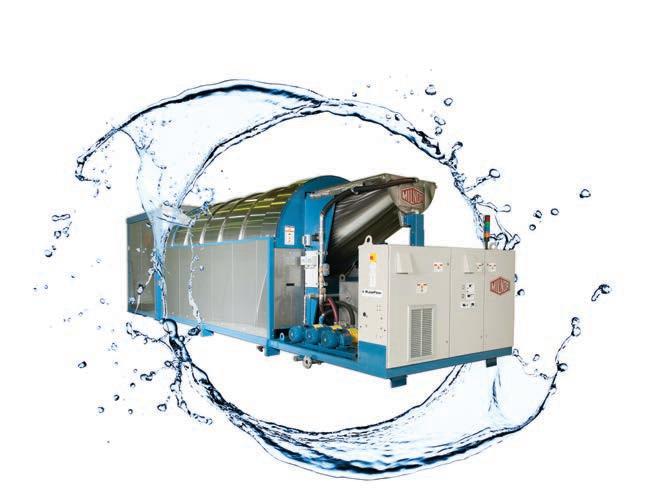
PulseFlow combines the innovative RecircONE® fast wet down and chemical immersion in the first module with standing bath washing in every spacious process module. Thorough and efficient dilution occurs by way of intermittent high velocity counterflow rinsing and traditional True Top Transfer.
The result is hygienically clean linen using less water (as low as 0.3 gallons per pound/2.5 liters per kilogram) and less energy as proven time and again by hundreds of PulseFlow tunnels in a variety of laundry applications worldwide.
Contact an authorized Milnor distributor or call 504-712-7656 to find out more.
www.milnor.com

A+B = Proper processing
Iwould make a lousy laundry employee.
At least, that’s what my wife thinks.
Just because I overfill the washer, eyeball the detergent and dry everything on high for a long time, she seems to think I’m not doing the laundry properly.
Well, maybe she’s right.
I know she would be right if she were talking about how a laundry and linen service operates.
With all of the linen and soil types processed in the industry, a company has to have the right wash formula to remove soils and stains, extend linen life and conserve resources and money.
If you’re struggling with your wash formulas, this issue of American Laundry News is for you.
You probably already
The Editor’s Desk MATT POE
noticed the cover story on creating effective wash formulas. In that article, experts offer up some general tips about creating good wash formulas based on fibers, soil and chemistry, plus time, temperature and mechanical action.
Maybe you’re looking for just
a “boost” in cleaning and disinfecting goods. The article on added boosters on page 19 examines three options to enhance your process.
This month’s OPL 101 on page 12 looks at how athletic equipment managers use cycle flexibility to make team uniforms look their best.

Even our Panel of Experts (page 14) offers advice on how an operation can fine-tune its processes to increase pounds per operator hour (PPOH) while processing goods properly.
Not to sound like an infomercial, but that’s not all. This month’s publication is chock-full of other articles and news to help you stay up on the industry.
I hope this issue helps you do business a little better. Keep it clean, everybody. ALN
TRSA launches Hygienically Clean Healthcare China certification
ALEXANDRIA, Va. — TRSA, the association for the linen, uniform and facility services industry, launched the Hygienically Clean Healthcare China certification in Shanghai in October, the association reports.
The Chinese version of Hygienically Clean is based on emerging Chinese healthcare laundry guidelines and TRSA’s Hygienically Clean Healthcare certification program, which reflects a laundry’s commitment to best management practices (BMPs) and compliance in processing healthcare linens and garments, says TRSA.
Hygienically Clean includes third-party inspection of critical control points and measures the laundry’s capability to produce hygienically clean textiles with ongoing microbial testing.
TRSA Chairman David Potack, Unitex; Director of Industry Affairs Bill Mann; and President and CEO Joseph Ricci attended the China Healthcare Laundry Association Conference to launch the program. The
organizations also discussed forging a more cooperative relationship including TRSA membership, translation of healthcare-related resources, and industry benchmarking, says TRSA.
Potack presented the development, implementation and growth of Hygienically Clean Healthcare to the nearly 200 Chinese owner/operators attending the conference, the association says.
“We are extremely pleased to be partnering with the China Healthcare Laundry Association to develop Hygienically Clean Healthcare China,” says Potack.
“TRSA and the China Healthcare Laundry Association will appoint a joint task force to review and develop a Chinese standard that ensures laundries’ compliance with emerging regional guidelines while implementing proven, measureable processes based on quality assurance (QA) documentation, training, and independent inspection and testing protocols that align with TRSA’s Hygienically Clean Healthcare.” ALN
The most valuable work: Planning
I have always believed that, to be successful in life, you must have a plan.
I learned this principle at my father’s knee as he would sit down and talk about my future. He didn’t have a plan for me but instead wanted me to develop my own plan. What was I interested in, what did I want to do when I grew up?
Then, he helped me understand if those were my dreams, just what I needed to do to make them happen—what courses I needed to take in high school and college to give me the training I needed to make that dream become a reality.
My original plan never became a reality, not because I didn’t follow the plan but because the jobs in that field were far too few and impossible to get. I had to develop an alternate plan to support my wife and me.
I found myself working temporarily in a healthcare laundry but enjoyed the work. My college degree quickly got me promoted into a management training position, and my boss spent time with me, talking about the wonderful opportunities available for young managers in the industry. I was sold and set out making a list of all the things I needed to master to become truly competent in this new field.
I developed a plan. Every manager needs a self-development plan to improve their skills and stay abreast of the changes in the industry.
Over the years, I learned the value of planning for changes in my laundry. What would we need to do to increase our volume by 25% or more? What would we need to do if our volume decreased by 25%? What action plan should we follow in case of a major breakdown in the ironing department or the washing department? When should we send work out to be processed by other vendors, and when should we extend shifts? What about a major snowstorm or a hurricane?
Plans always need to be developed and refined based on your experience. A manager should never be caught unprepared when a crisis or situation comes his or her way. It is their job to always be looking ahead and training their people in how to handle sudden changes.
Time is our most valuable commodity and it should not be wasted. In the time of a crisis, it is critical that the proper steps be taken as soon as possible. Having a plan allows management to quickly react and meet the needs of their customers.
The key to planning is to do it when everything is running smoothly—to make sure you use your time on those days effectively and not just enjoy the easy day. Opportunities will come your way to show top management your skills as a manager.
When I was working in Memphis, Tenn., my healthcare organization hired a new CEO. I was the manager of an offsite, systemwide central laundry and figured I would never get to meet the man. To my surprise, he showed up in my office during his first week of employment and asked me directly about my management succession plan. What would happen to the laundry operation if I was suddenly lost to the operation?
I carefully reviewed how my management staff was organized, the skills of each manager and their ability to keep the current system in good operational shape. After an hour-long discussion, he thanked me for the information and explained that, in his last job, he had experienced a major problem when the director of the central laundry suddenly died and his staff was not prepared to handle the facility without him. He was not prepared to go through that again and appreciated our management plan.
•
•
•
•
During my career, I had opportunities to double the workload of my laundry in 60 days. I also had to plan for the complete replacement of the dryers on one of my two tunnel washers while still meeting all my customers’ needs. Careful planning, looking ahead, thinking about the business and the opportunities that may come your way—that is the most valuable work you will ever do as a manager.
Eric Frederick has retired from active laundry management after 44 years. He is available as a laundry operations consultant. He is a past president and two-time manager of the year of the Association for Linen Management. You can contact him by e-mail at elfrederick@cox.net or by phone at 540-520-6288.


4 DEC E MB E R 2017 | AMERICAN LAUNDRY NEWS www.AmericanLaundryNews.com
From
COLUMNIST AT LARGE Eric L. Frederick, RLLD
ALN
Top Stories Appearing on AmericanLaundryNews.com for the 30 Days Ending November 15 (WE) = WEB EXCLUSIVE NEWS • Aramark, AmeriPride Services to Merge by Year’s End • Edmar Chemical Co., Lonza Form Strategic Alliance
Clean Show Sites Through 2025 Announced
Mission Linen Supply Awarded for Sustainability Leadership
HLAC Board of Directors Names
President COLUMNISTS/FEATURES • Effective Customer Contracts • Breaking Down Interruption Strategies
Rewash: Money Down the Drain
Textile Transportation: More Than Moving Linen from Point A to B
Making Sense of Automation: Washers, Open-pocket to Batch ... OUR SISTER WEBSITES From AmericanDrycleaner.com:
•
•
•
Bushman
•
•
•
Press Cleaners Bags Seed Money
Cooling Towers for Dry Cleaners From AmericanCoinOp.com:
Keeping Good Laundromat Employees
Offbeat and Off the Beaten Path











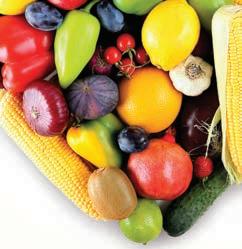








americandawn.com | imagine@americandawn.com HACCP IS ABOUT FOOD SAFETY In food processing plants, HACCP plans are about ensuring that critical control points are contaminant ree merican awn o ers a ull line o arments, as well as the nowledge and training to su ort your team i e us a call to learn more a out how we can open the door to this growing marketplace. CALL US: 800 821 2221 LET’S KEEP OUR FOOD SAFE
duction despite subpar equipment. Employed by the laundry since its inception, Campbell dug in her heels for the cause.
“I’ve made this my life’s work and couldn’t see our folks lose their jobs,” she says. “For months, we worked really hard to keep the laundry running.”
In the meantime, Gannon successfully lobbied the executive board for new, high-performance laundry equipment. He justified the purchase by bringing in a new client—a large hotel.
In November 2016, Yakima Specialties Laundry embraced new Continental E-Series washers, including one 130-pound and two 255-pound machines.

Greg and Michael Tompkins of Integrity Laundry Solutions, a full-service laundry equipment and chemical provider in Walla Walla, Wash., recommended, installed and programmed the equipment to meet Yakima Specialties Laundry’s specific needs. Integrity provides ongoing service and support.
‘A NEW OPERATION’
The soft-mount washers, which replaced their hard-mount predecessors, immediately catapulted laundry efficiency and production, creating opportunities for addition-
al business and more production workers.
“It’s been a new operation ever since,” says Gannon. “It never had as much success in years past. Today, it’s contributing to our mission and bottom line.”
Integrity Laundry Solutions recommended the Continental softmount washers because of their simple installation and ability to greatly boost laundry production.
Unlike hard-mount machines, which require bolt-down to a concrete foundation, Continental softmount washers feature a MultiDirectional Springs (MDS) system that absorbs 95% of all vibrations. This allows installations in unconventional locations, all with little or no floor preparation or cost.
The freestanding E-Series washers can also be relocated with zero impact on the facility.
Engineered to process more laundry per day, the new machines generate extract speeds up to 387 G-force, whereas the washers they replaced only produced extract speeds reaching 150 G-force.
“This high-speed extraction removes more water from each load,” say the Tompkinses, “reducing dry time by up to 50%.”
Thus, Yakima Specialties Laundry successfully increased production and, simultaneously, lowered utility costs.
Today, at just 60% capacity, the laundry processes 3,000 to 3,500 pounds of laundry per day, according to Gannon.
“This means we can take on more business and continue to grow,” he says.
PROGRAMMABILITY AND GROWTH
The highly programmable washers allow Yakima Specialties Laundry to take on multiple clients and process an array of items.
After installation, Integrity Laundry Solutions programmed the machines by load type, to automatically mix the right chemicals with the correct water temperatures and mechanical action. Thus, each washer offers multiple programs to clean a variety of items, including bed linens, towels, blankets, comforters, bed pads, uniforms and more.
“We’ve been washing large, flexible intermediate bulk container bags for an international corporation,” says Gannon. “Our washers clean them like they are brand-new so they can be reused, rather than thrown out. It’s been a tremendous success, and the bottom line is extremely favorable.”
Operating the washers is easy, as well. Employees enter a program number, load the machine and press start. The washer does the rest. One-touch operation eliminates user error and produces consistent, high-quality results.
“The laundry is much more energy-efficient and uses less water and natural gas,” says Tara Goltry, administrative assistant with Yakima Specialties. “We noticed
type of goods, the water quality and temperature available, etc.”

we were saving money on water and electricity right away.”
“Before, our rewash was extremely high,” Campbell says. “Now, it’s at an all-time low.”
This saves money and time. Plus, the E-Series washers are designed without a sump, which saves up to 3 gallons of water with each fill.
AquaFall and AquaMixer systems enhance efficiency further, according to the Tompkinses, by creating superior load saturation, chemical penetration and rinsing, and minimizing hot-water consumption through precise mixing of hot and cold water.
“We couldn’t be happier with the equipment,” says Gannon.
“The next project is the replace-
been determined, chemistry can be selected.
ment of the laundry’s dryers.”
In the meantime, the Yakima Specialties Laundry is doing its job—supporting area businesses with clean laundry, and more importantly, training and employing adults with disabilities.
“We believe everyone is worthy of a chance to be a productive member of society,” Goltry says. “They might not get a fair shot somewhere else in the community because of their disability. At Yakima Specialties, we can make accommodations for them. They do what they can and develop skills along the way.” ALN
provided documentation of the process for administrative and compliance reasons.
Today, Skinner is on the chemicals side of the industry as a sales manager for U.N.X. Inc. And he knows what laundry and linen service providers are looking for when it comes to creating wash formulas: quality, service and value.
“Many factors are considered when specialists work with customers to design effective wash formulas and processes for all of the different classifications that they handle,” says Steve Tinker, senior vice president of research and development, marketing, for Gurtler Industries Inc. “The basic considerations are soil types (body soils, blood, natural fats/ greases, food soils, petroleum oils and greases, and particulate soils, for example), concentrations of the soils (light, medium, heavy, extra heavy), and the types of fabrics (cotton or polyester or blends).”
Kevin Minissian, president and CEO of Norchem Corp., says that while there may be something that can be called the “right” wash formula, that does not necessarily mean there is one right formula.
“For example, the right formulas for one facility may not or will not be the best fit for another,” he says.
David Barbe, director of engineering for U.N.X., agrees, and says there are multiple methods to clean goods.
“One can use traditional high-temp, highalkalinity baths, or low-temp, enzyme baths,” he says. “Pick your method depending on
Tinker adds that more specific considerations have to be taken into account, such as type of washing equipment, productivity requirements, and energy and water conservation goals or limits. Other operating conditions, such as the quality of the water and any restrictions on chemistry created by wastewater regulations, also must be considered when a laundry seeks to create the most effective wash formulas for the goods it processes.
FIBERS, SOILS, CHEMISTRY
Two major factors for laundry operators and chemicals suppliers to consider when creating wash formulas are the types of fabrics being processed and the types of soils being removed.
For the type of fabric, Barbe simply recommends reading the label on the goods to be processed.
“Are the goods white or colored? Are they cotton, synthetic or blended?” he queries. “If the laundry isn’t familiar with a type of material, call the manufacturer.”
Then, laundry personnel need to determine what type of soil it is trying to remove.
“Hospital goods? Industrial greases? Food industry? Sunscreen?” Barbe says. “It makes a huge difference in what products and procedures need to be used. If greases and stains aren’t coming out, check your temperatures. Don’t overheat proteins, but try to add heat for greasy stains.”
Once the fabric and soil classifications have
“It is also important to note that part of what makes a formula particularly right is having top-quality chemistry and the understanding of how that chemistry can adjust to combat any conditions that may affect the wash process,” says Minissian.
“Insist that your chemical rep check the quantities and verify that everything is going in correctly,” Barbe adds. “It’s his job.”
Besides the chemistry, temperature, water levels, time and all other factors must be appropriate for the bath and type of goods being washed.
“One might wash shop rags from the auto shop at 180 degrees with detergent, lots of alkali and some solvent combined in the first bath,” says Barbe. “Yet, a cold flush with a little peroxide is more appropriate for hospital or hospitality goods to flush out certain soils before they get set on the material.”
In the washing operation, usually the pH is on the high end of the alkaline scale, 11.5-12.5, because many soils are acidic in nature and alkalis can react and neutralize or break down these soils so they can be more easily suspended or emulsified by the detergents in the wash liquor, Tinker says.
Also, before the wash formula ends, the fabric has to be at a neutral pH, Minissian says. The fabric needs to be well-rinsed and neutralized to be safe for use—the acidity can result in skin irritations for the end-user.
“Sometimes the inactive alkalinity of the city water can cause a high pH, so it’s impera-
tive to neutralize that, not only to protect for human use, but also protect the fabric from chemical damage,” Minissian says.
Barbe agrees that the pH of a bath is highly important. The pH levels need to be within the proper range.
“For instance, chlorine bleach needs a certain range of pH and temperature to operate properly,” he says. “The wrong range can mean one will get no bleaching, or totally dissolve the goods. The goods also need to end up at a proper pH. Some ironers work better at a little different pH than the linen manufacturer would like the goods to end on.”
Alkalinity levels required for a successful washing will need to be determined, says Scott Pariser, president of Pariser Industries.
“Different bleaches operate better at different temperatures; higher pH requirements may be required for fatty soil saponification and/or acid soil neutralization, while in certain other instances, acidic pH washing for fine washables might be more appropriate,” he says. “So, too, will one need to choose the type and amount of sour and/or an anti-chlor relative to inbound water contaminants such as iron and chlorine.”
Water quality plays a large role in formula construction, he adds.
“Use of water conditioners, location of steam injection (if necessary), formula length and water volumes may all be affected by water hardness, and the aforementioned contaminants found in the inbound water supply,” Pariser says.
Similarly, local ordinances may require tight control over discharge pH levels, a factor that he says will affect alkaline builder usage.
6 DECEMBER 2017 | AMERICAN LAUNDRY NEWS www.AmericanLaundryNews.com
Haley Jorgensen is a public relations writer for Continental Girbau Inc.
Continued
Page 1
from
Yakima Continued from Page 1 Wash
(From left) Tori Batten, laundry afternoon shift supervisor; Sylvia Campbell, manager of laundry operations; and Tina Gomez, assistant manager of laundry operations.
“ ... THE RIGHT FORMULAS FOR ONE FACILITY MAY NOT OR WILL NOT BE THE BEST FIT FOR ANOTHER.”
See WASH on Page 10
—KEVIN MINISSIAN, NORCHEM CORP.

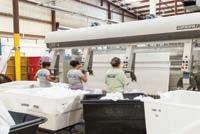
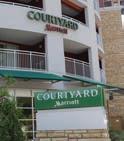



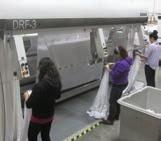
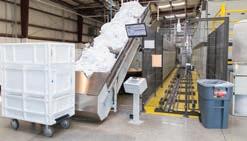
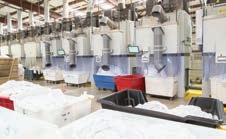


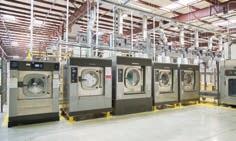


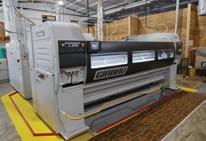
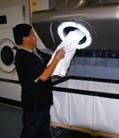
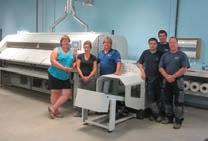
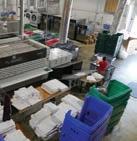
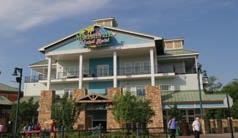











































































































By embracing a stepped approach to laundry automation, Whistler Laundry increased production 90 percent in just under four years. THE COMMERCIAL LAUNDRY STARTUP ADDED EQUIPMENT AND AUTOMATION AS IT GREW — IMPROVING PRODUCT QUALITY, BOLSTERING PRODUCTIVITY, CAPTURING NEW CLIENTS AND LOWERING LABOR COSTS. (800) 256-1073 • www.girbauindustrial.com INDUSTRIAL INCREASE THROUGHPUT. IMPROVE PRODUCTIVITY. BOOST PROFIT. INNOVATIVE LAUNDRY SOLUTIONS
Tools f the Trade
Compressed air filter line expands
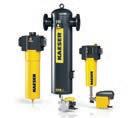
SanMar Corp., a supplier of apparel and accessories, has added more than 40 new apparel styles from New Era, the company reports. This new collection, offered exclusively by SanMar, captures the history and essence of the New Era brand, according to the company.
Since 1920, New Era has been handcrafting headwear. Today, with apparel and accessory lines, the brand is a market leader rooted in sports and an influencer of street and lifestyle culture around the globe. With more than 500 licenses in its portfolio, New Era is the brand of choice in the worlds of sport, fashion, music and entertainment.
This all-new apparel line, developed in close collaboration with SanMar, is the first time that New Era has expanded beyond hats to offer something new to the promotional products industry, according to SanMar.
“Each style is designed with authenticity and modern details in soft-handed fabrics,” says Lee
Continental Girbau Inc. recently introduced the 80-pound capacity E-Series® WasherExtractor to its line of softmount, high-performance washers engineered to catapult laundry productivity while curbing dry time, labor hours and utility consumption, the company reports.
The E-Series line now touts models with capacities of 20, 30, 40, 60, 80, 90, 130 and 255 pounds, all of which bring highly programmable controls, superior efficiency, up to 400 G-force extract, and high production per linear foot, Continental says.
“The 80-pound model bridges an important capacity gap between the 60- and 90-pound models,” says Joel Jorgensen, vice president of sales. “It features a compact design and offers more production per linear foot.”
Unlike high-speed hard-mount washers, which require 18 to 24 inches of separation between machines for bolt-down maintenance and foundation stress requirements, E-Series soft-mount washers can be installed closely together, according to Jorgensen.


“The new 80’s small footprint and soft-mount design allow on-premises and commercial laundries to greatly enhance throughput within a smaller area,” he says.
Continental says all E-Series Washers feature the highly flexible Inteli Control, offering 20 pre-programmed cycles and up to 79 individually modifiable cycles. Operators can program water temperature by degree, wash rotation speed and duration, water levels, bath cool-down by degree, and up to




Strom, vice president of marketing at SanMar. “Our New Era apparel line blends lifestyle looks with the heritage of sports and modern details. It was built for clients seeking a recognized retail brand at achievable price points.”
The New Era apparel launch includes performance T-shirts, sweatshirts, polos and active wear. Lifestyle options, including Heritage Blend 3/4-Sleeve Baseball Raglan Tees and Sueded Cotton Tees and Hoodies, offer comfort with edgy style, and onfield pieces, like Diamond Era FullButton Jerseys, offer the performance details like moisture wicking, odor control and snag resistance.
A catalog will be available in early January 2018, and SanMar says it will showcase the new products at beginning-of-the-year trade shows.
www.sanmar.com 800-426-6399
six extract speeds. Additionally, the SmartLoad system automatically tells operators when the washer is loaded to 25%, 50% or 100% capacity.
E-Series Washers slide easily into place without the need for reinforced concrete foundations, grout and bolt-down, allowing for future relocation and lower installation costs, according to the company. Additionally, when compared with most hard-mount washers, which generate 75-200 G-force extract, Continental says its soft-mount E-Series Washers produce up to 400 G-force extract, removing more moisture from every load during extract and reducing dry time by up to 50%. In doing so, E-Series Washers improve laundry productivity and decrease natural gas and electricity usage, the company adds.
Designed for green efficiency, E-Series Washers feature a sump-less design to save up to 3 gallons of water per fill, according to the company. AquaFall™ and AquaMixer systems further curb water usage.
AquaFall releases water into the load via holes in the drum lifters. As the drum turns, lifters release water from above to better penetrate fabric. With E-Series, laundry is saturated from above and below. This cuts water usage and rinse cycle times while improving wash quality. AquaMixer further improves efficiency by mixing hot and cold water before entering the drum. Continental says this achieves precise water temperatures, offering greater control over hot-water consumption.
www.cgilaundry.com 800-256-1073

Manufacturers: Have you introduced a new product? Revamped your system? Released a new catalog? E-mail your product news, along with a high-resolution image, to mpoe@atmags.com and we’ll consider publishing your news free in Tools of the Trade.


Kaeser Compressors Inc. has expanded its compressed air filter line to cover flows from 20 to 11,875 cfm, the company reports. Kaeser says its rugged filters deliver reliable compressed-air quality with exceptionally low pressure drop for energy savings year after year.
The new larger-capacity filters include bowl-style housings with a bayonet-style connection for flows from 650 to 1,130 cfm. Pressure vessel-style filters begin at 1,250 cfm and cover flows up to 11,875 cfm. The pressure vessels are ASME/CRN-rated and feature full vessel-diameter access for simplified maintenance, Kaeser says.
The comprehensive line includes liquid separator, particulate, coalescing, and oil vapor absorbing filters to meet a wide range of air quality needs for any ISO 8573.1

air quality level, according to the company. Particulate and coalescing filters feature deep pleated filter elements wrapped in stainless steel cages for superior filtration and increased efficiency. Vapor filters use high-efficiency carbon matting to prevent channeling, reduce pressure drop and prevent particles from escaping.
www.kaesernews.com 877-596-7138
Southwest Laundry Equipment has introduced its newest product, the Flame Retardant Soil Sling Cover, the company reports.

The sling covers are manufactured at its warehouse in Phoenix, and Southwest says the covers are made to withstand extreme heat, including fire.
The company says the Flame
Retardant Soil Sling Cover is fabricated to withstand combustible fabrics. It is custommade with Nomex®, 100% Aramid fibers and a Teflon™ coating. In addition, the sling cover is constructed with a drawstring, which leads to oxygen deprivation.
Also, Southwest says it’s assembled with four eyelets to secure the bag to the post. www.azsle.com 602-253-9687
Personal pillows for healthcare setting introduced

Encompass Group LLC, which produces healthcare textiles and linens, including pillows, has introduced FreshStart® personal pillows through its division, The Pillow Factory®, the company reports.
“Our FreshStart personal pillows set the quality and performance standards for the entire industry. The breathable, non-woven covers these single-patient-use pillows offer deliver maximum patient comfort. And fresh pillows are an ideal way for staff to address cross-contamination concerns,” says Michelle Daniels, director of marketing for The Pillow Factory. “Furthering our commitment to customer inventory management needs, FreshStart pillows are provided in our Case Saver™ program packaging, assisting in saving time, space and waste.”
The company says FreshStart Personal Pillows come in standard, medium, full and full plus loft levels in 17-by-23-inch, 19-by-25 and 21-by-27 sizes; specialty, post-surgical pillows and hugger pillows for propping, impact reduction and positioning are available with a disposable pillowcase in a 13-by-17-inch size.
www.encompassgroup.net 800-284-4540
8 DECEMBER 2017 | AMERICAN LAUNDRY NEWS www.AmericanLaundryNews.com
Soil sling cover being produced to withstand extreme heat, fire
machine added to soft-mount washer line
80-pound-capacity
Headwear maker now offering more than 40 apparel styles distributed exclusively through apparel supplier
When dealing with laundry stains, your reputation rides on getting the outstanding results The Laundry Two deliver. RiteGo® laundry spray spotter quickly penetrates to absorb collar & cuff stains, perspiration, ground-in soil and more, all without brushing. Turn to Laundry TarGo® to remove any tough oil based stains that remain behind.

Use The Laundry Two with confidence on shirts, wedding gowns... anything you're washing or wetcleaning.
Both Laundry TarGo and RiteGo are chlorinated-solvent free, biodegradable, noncombustible and California 2013 VOC and Prop-65 compliant.
Use them to deliver stain-free laundry and wetcleaning. You'll build your reputation for quality - which is what keeps customers coming back.
FROM COLLARS AND CUFFS THE LAUNDRY T WO ™ ARE RIGHT FOR YOU! TO THE REALLY TOUGH STUFF... FROM COLLARS AND CUFFS THE LAUNDRY T WO ™ ARE RIGHT FOR YOU! TO THE REALLY TOUGH STUFF... To learn more, visit ALWilson.com or call 800-526-1188 A. L. WILSON CHEMICAL CO.
a STAIN WIZARD at ALWilson.com
Become
NEW Mesh Backed Side Pocket Mops
• 100% microfiber mesh backed for a stretched snug fit
• Quicker mop drying times due to mesh construction
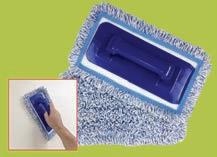
• 18” Mop fits your existing pocket mop frames
• Starting at $2.40/mop
Serious About
Microfiber.
Professional quality products at consumer friendly price points.
Our microfiber product lines grow year over year to better serve you as your customers’ cleaning needs evolve.

If you’re as serious about microfiber as we are, try us out.
Call 215 482 6100 and talk to us about your specific needs.
We will send you a sample kit and catalog so you can experience Monarch Brands microfiber for yourself.

Wallwashing Mop
• Lightweight extendable ‘hand mop’ for reaching elevated grime.
• Telescopic pole (from 28” - 48”)
• 360° swivel maneuverability
• Starting at $2.45/frame, $2.25/telescopic handle, and $1.39/pad
Handy Trowel
• Ergonomic chisel tipped trowel handles stuck-on grime
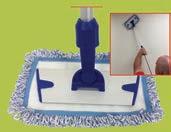
• Use on vertical and horizontal surfaces
• Starting at $3.00/trowel and $1.39/pad
Product Perspective: Floor mats
Mats offer business opportunities if selected, handled properly
BY MATT POE, EDITOR
ALEXANDRIA, Va. — What do textile rental customers know about floor mats?
“What does the average person know about a floor mat? When I talk about what I do, they have a blank stare and then say, ‘Oh, yeah, mats for cars,’” says Tyler Fowler, president-textile rental division of Mountville Mills. “I tell them we manufacture floor mats for the textile rental industry, we rent them, we clean them—and then they go back to the blank stare.”
Fowler says this lack of knowledge by the average person reflects what customers know about floor mats. The challenge for rental companies is to educate customers about floor mats and their benefits.
But textile rental companies need education as well, he says. They need to know which mats are needed for different applications, along with proper handling.
Fowler discussed these topics during a webinar for TRSA, the association for linen, uniform and facility services, titled Product Perspective: Providing the Right Product for the Right Application
The key benefit for customers, says Fowler, is safety: “If you have a facility, you have a responsibility to your employees and customers as well.”
According to the National Safety Council, there are more than 25,000 trip, slip and fall accidents every day. Almost 90% of these are due to surfaces and footwear.
“We love the line, ‘Mats prevent accidents before they happen.’ We truly believe that,” he says. “People walk through a facility and wet environments every day and don’t think about the fact that the entryway mat works to take off any dirt, soil and moisture and allows a clean transition onto the dry floor.”
But simply having a mat isn’t enough, according to Fowler. They need to be used properly.
He cites a recommendation from CNA, an insurance provider, that says to maintain effectiveness, mats need to be changed out at regular intervals to avoid becoming saturated. Saturated mats allow contaminants to reach clean floors, reducing slip resistance.
“The key note is that the mats have to be changed out at regular intervals,” Fowler says. “There’s only one industry I know that offers this kind of service and that’s our industry.”
Yet, it’s not uncommon to go out and see improper mat usage in improper locations, he says. It’s easy to forget about them and overlook advancements and trends.
“Providing a safe walking surface is of absolute importance to your customers,” says Fowler.
RIGHT PRODUCT, RIGHT APPLICATION
When it comes to providing mats for textile rental customers, Fowler cautions that not all accounts are created equally.
“Mat requirements for a school, hospital, supermarket, airport, are certainly not the same as they are for Joe’s Auto Repair,” he says.
Hospitals and supermarkets are the two most difficult applications to provide mat services for, according to Fowler. There are many different combinations and variables: carts, wheelchairs, areas that are wet from produce, restrooms in hospitals, etc. Each has to be treated differently, and rental companies have to understand product specifications to put them into service.
Fowler says there are three basic components to mats: rubber thickness, type of rubber backing and fiber used.
Rubber thickness is measured in mils
time, you will have to increase the chemicals and/or the temperature.”
LAUNDRY PIE
When it comes to programming wash formulas, the formulator’s interpretation of the established laundry industry pie chart is key, Pariser says. The “pie” is initially divided into the four equal components of time, temperature, mechanical action and chemistry.
“One must balance all four of these components such that when one item is diminished, one or more of the others must be enhanced,” he says. “Often, operational factors, such as limited production time requirements, and/or the availability of sustained hot water supply, will affect how this chart is manipulated.”
For instance, if a plant can’t provide sustained hot water at required minimums, wash time or mechanical action (through reduced loading weights or water level variation) or chemical dosages, and maybe all three, will need to be enhanced proportionately.
“If one has little mechanical action, something else will have to be increased,” Barbe says. “Those four factors are interrelated. If you have lots of time, you can save on some of the other factors. Or, if you are short of
Barbe says a good formula is usually the result of starting with reasonable guidelines, titrating the baths for concentration, and then adjusting time, temperature and chemicals to achieve good results.
“Evaluate the results by percentage of stained goods left, brightness, etc.,” he says. “Samples can be sent for lab analysis to test for tensile strength loss, soil levels and many other factors.”
In the end, both the laundry and the chemicals supplier have to consider their customers. Pariser says wash formula construction requires a delicate and thoughtful consideration of the individual laundry and its production requirements, along with local water-in and water-out restrictions, in order to provide the best approach to providing clean, hygienic linens in a costeffective manner.
“Once we understand the conditions and the operating parameters that the customer wants to meet or is restricted by, then we can design specific wash formulas for every classification in the laundry,” Tinker says. “The best chemistry for the overall conditions is selected. Alkali, water and soil conditioners, detergents, bleaches, fabric softener and/or fabric sanitizer, and sours are all selected for the best possible results.”
10 DEC E MB E R 2017 | AMERICAN LAUNDRY NEWS www.AmericanLaundryNews.com
Introducing our 10” Multipurpose Microfiber Pad System
Minimums apply on all advertized prices.
ALN Continued
from Page 6 Wash
•
•
•
•
•
•
(1,000th of an inch), and most mats have a rubber thickness around 52 or 53 mils, says Fowler. But there are mats with greater thickness, such as 65 and 90 mils.
The thicker the rubber, the greater the weight, he says. And a heavier mat is more likely to stay in place.
“There is a 6-pound difference between 52-mil and 90-mil mats,” says Fowler.
The next component in terms of the right mat for the right application is backing. There are three types, according to Fowler. Cleated backing is made to grip carpet, but it can be used with some success on smooth floors. A smooth backing is for use on smooth flooring, and a suction-type backing is a combination of heavier rubber with a suction design.
“With carts in healthcare, supermarket, it’s really important that the mat stays in place,” says Fowler.
In testing, he says a cleated mat on a smooth floor, after 100 passes, had a 55-inch displacement; the smooth back, after 100 passes, only moved 4 inches.
“During the Indy 500, the announcers talk about the development of the tires,” Fowler says. “If you notice the tires, they’re smooth. They’re slick tires because they want the greatest traction on the road, and the more surface area that is in contact, the more traction the tires have. This same logic holds true with mats.”
He says a 3-by-5 cleated mat has 26% of its surface area on the floor. The smooth back offers 100% surface area contact.

“You have to determine the floor type where you’ll be placing the mat and what backing will work best,” says Fowler.
Yarn and fiber component construction, in combination with rubber backing and rubber thickness, can help a mat perform better in certain applications, he says. More yarn adds more weight and stability with thicker rubber.
Another factor to consider is the border, he says. A 90-mil backing and 90-mil border will help ensure the edges of the mat won’t buckle when a cart is pushed over it.
The temptation for textile rental companies, Fowler says, is to offer a standard 52-mil mat for all accounts.
“I know that those on the production side will say, ‘We can’t keep track of all these products,’” Fowler says. “However, you have to have a product that meets the needs of your customer. There are too many different needs out there to have a one-size-fits-all mat to offer. A 52-mil, standard-cleat backing does not allow you to go into every type of account and confidently put it in place, knowing it’s going to perform the best that it can.”
MAT HANDLING RECOMMENDATIONS

There’s more to mat service than simply providing the right mats, Fowler cautions. If the mats aren’t handled properly by the back
of the house, the mats won’t work well.
“I would say more than ever, customers are looking at how flat mats are when they’re put into service,” he says. “You can go to any of these slip-and-fall attorneys online and look at their web page. You’ll see mats listed in there: old, outdated, improperly placed mats. It is something that your customer is looking at.”
One of the biggest questions Fowler hears is, “Should we dry our mats?” Companies have gotten away from drying due to energy costs.
He agrees that proper extraction can eradicate moisture, but his company still recommends that mats be dried, for two reasons. First, it helps knock out the sand and dirt that remain in a mat after it’s washed. Second, it helps create a better finish.
“Think about when you wash your clothes at home.
If you washed a white T-shirt and took it out of the washer and immediately laid it out, it gets wrinkled. If you put it in the dryer, you get a much better finished look,” Fowler says.
He says most wrinkled mats aren’t permanently wrinkled. They will eventually lie flat, but at first it’s a potential for slip and fall. Drying offers a better chance of producing a mat with a good finish that lies flat.
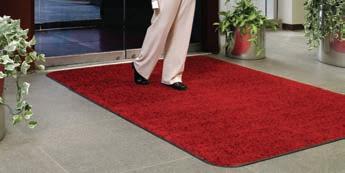
Continuing with the subject of producing a mat that lies flat, Fowler recommends to keep up with rolling mats for storage or to lay them out until they can be rolled. The more mats sit in a pile, the more wrinkled they become.
“For rolling, when you fold the top quarter of the mat over before it is rolled, that creates a crease on the mat,” he says. “When it’s placed onto a surface, it creates a hump in the mat. That folding may help with rolling, but it creates that hump.”
Another way creases and humps form in mats is by storing too many rolled mats on top of one another, according to Fowler. Once a stack reaches six to eight mats deep, the weight adds pressure and flattens out rolls on the bottom, developing creases.
Even during transportation, he says it’s important to keep mats in a position so that when it is placed, it lies flat.
“The way that we handle our mats plays a significant role in the finish of mats that we deliver to our customers,” he says. “There’s best practices for everything, and there is the reality of operating on a day-to-day basis. You need to find the balance of those two factors to work together.
“It’s a combination of all these things that help ensure that as an industry we’re putting out the right product and the best-performing product that we can.”
TRSA’s next webinar is scheduled for 2 p.m. Eastern, Dec. 6, when the topic will be Building Your Hotel Linen/Uniform Business, European-Style. Visit www.trsa.org/webinars for more information. ALN


•
•
•
•
•
Lulworth 200 Sheet Collection
• Made in China with colored threads to easily identify the sheet sizes







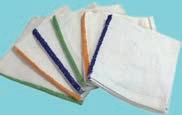
• Crease-resistant 60/40 cotton/poly blend


• Woven on airjet looms and tested for strength and performance
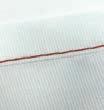
• Carton packed & guest ready
• Sheets start at $68.09/dz

GOT BARMOPS?

Qwick Wick Terry Towels
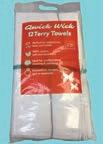
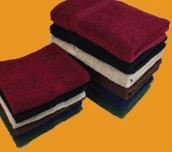
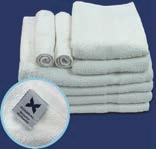
•
•
•
•
www.AmericanLaundryNews.com AMERICAN LAUNDRY NEWS | DECEMBER 2017 11
Specifically Designed For Hospitality
Made
with USA Cotton in Bangladesh
4
Core Hospitality Towel SKUs
Cotton/Poly
Blend for Softness & Strength
Airjet shuttleless construction
Consistent product
box
box after
Optically bright white
Call for pricing
True Color Towels
Designed for clubs, spas, gyms, and institutional facilitites
100% Soft ring spun cotton
Matching dobby borders
Starting
hand
at $34/dz bath, $9.75/dz
Our best bar mops packed for online sales, and point-of-purchase displays
Monarch Brands’ route ready bar mops help laundry managers alleviate capacity constraints and boost cost-effective operations. We save laundries the time and expense of pre-washing and counting out new bar mops before their ‘first route’. Typically, laundries save at least 70¢ per dozen in washing and packing expense alone. Call 215 482 6100 to learn more.
Attractive Retail Packaging
Pre-Washed & Folded
Convenient Carrying Handle
Starting at $3.95/bag
We Know Laundry Textiles. Some of the biggest brands in the industry trust Monarch Brands with their textiles needs. Shouldn’t you? Call 215 481 6100 or visit monarchbrands.com to start a conversation. FULLQUEENKING
Safety and appearance are key for customers when it comes to floor mats. (Photo: Mountville Mills)
Cycle flexibility needed to ensure quality process performance, results
 BY BILL BROOKS
BY BILL BROOKS
RIPON, Wis. — Spend a little time with a veteran equipment manager at a college or professional sports organization. Not just someone who’s been in the game seven or eight years, but the guy who has been around a couple decades. He’ll talk about the good ol’ days when laundry was about zeroing in on a couple soil levels, maybe a couple programs—one for towels, one for uniforms—and the results were just there.
Today, athletic facility laundry is anything but a blunt, generalist exercise. The combination of high-tech fabrics, unique soils, higher-power detergents and laundry chemicals have made the laundry room less of a utilitarian space and more of a laundry science room. Little things can have a big impact in this environment. Add to the equation the fact that “looking your best” means something entirely different today than it did 20-plus years ago.
IN LIVING COLOR
Obviously, professional sports are big business, with major college athletic programs also drawing major dollars in jersey sales each year. It’s imperative that when those teams take the field or court, uniforms present an image of excellence. OK, sure, that’s always been the goal for years and it hasn’t shifted … or has it? It seems that the stakes are much higher.
On that 50-inch, high-definition TV many of us have hanging in our homes, we can practically see if a blade of grass is out of place. Colors are crystal clear and pop off the screen.
If the advent of color TV put extra pressure on the laundry to ensure the Lakers’ purple and gold were sharp and not faded, high-definition TV has turned up that pressure even higher. That Alabama crimson has to jump off the screen every sunny Saturday afternoon, and the Packers’ green and gold has to look perfect that week after sloppy, snowy conditions at Lambeau Field.
The stakes are high for the onpremises laundries serving major universities and professional sports teams.
HIGH-TECH FIBERS
Ever look at the tags on a pair of football pants or jersey? Again, technology is in play here more than people might expect. Often, the NFL jerseys alone are made with more than a half-dozen different materials.
Gone are the days of that simple polyester uniform. Today’s jerseys feature high-tech, moisture-wicking fibers; mesh fabric for venting; thermal fibers (for cold weather); and a variety of other advanced materials, such as Spandex and Lycra, that are strong, lightweight and provide excellent flexibility. Those lightweight pants also feature a tighter weave, which further complicates removal of grass stains.
The bottom line is that these are expensive pieces of equipment—a full NFL uniform costs roughly $700 and college uniforms upward of $300—that are not going to hold up through the season if they are washed in general-cycle programs. Today’s athletic jerseys, shorts, etc., require a much more customized approach. This is necessary from pro sports all the way down to high school programs
A CORNUCOPIA OF SOILS
Equally challenging in the pro sports realm is the number of variables at play. The dirt a player slides on at Yankee Stadium may be a completely different type than that of the infield at Wrigley Field. Even the field paint isn’t standard across leagues.
Equipment managers require cycle flexibility to ensure quality results, often needing to get those results quickly in time for the next game. Again, despite all these challenges, failure is not an option. The white of those Yankee pinstripe uniforms has to be perfect every time the team hits the field (and runs across that highdefinition TV screen).
WHAT’S IT ALL MEAN?
So why do I bring all this up? Equipment managers have always been challenged to turn gear around fast with top-quality results. The results have to represent the names (team, league, manufacturer and player) on those uniforms in the best possible light. But now the stakes are even higher and the challenges
much greater. Fine-tuning cycles, something that seemed like overkill years ago, is absolutely a necessity today.
But this really isn’t unique to equipment managers and sports teams. The needs and challenges they face are the same as those of laundry managers in hospitality and long-term care, as well as commercial laundry operations and dry cleaners. Just ask a laundry manager at a hotel property about the types of stains they are tasked to remove on a daily basis; I’ve heard of everything from shoe polish and crazy hair dye colors on towels to bed covers loaded with pizza sauce.
And if you think special care and fine-tuning cycles is important only for those athletic uniforms, think about firefighter PPE (personal protective equipment).
This gear uses even more high-tech fibers that require specific wash formulas in everything from water temperature and the amount of mechanical action to water level and when and where chemicals are injected (below the water line; never directly on gear). Failure to adhere to specific wash instructions will damage fibers and endanger the safety of the men and women who wear PPE.
The bottom line is flexibility today is a prerequisite to longer linen life, safety, better use of utilities, and a higher-quality look and feel.
SMALL CHANGES, BIG IMPACTS
Often, it can be a struggle to shift from laundry generalist programs to upgrading to more flexible equipment and a tailored approach
Cycle flexibility is as important as the specific laundry chemicals being injected in the wash wheel. You only need to chat with your chemical company representative to learn just how specific they want to be on things such as temperatures and water levels.
In the past, 30 water levels might have sounded like a feature that would never be needed, but your chemical representative likely will thank you for the flexibility. It enables them to be significantly more precise in the water/chemical ratio. The benefit is quality. But it goes further. Even just dialing in water levels, when multiplied by the number of cycles per day, month and year, can produce substantial savings for the operation.
Having the flexibility of a spray rinse can also not only save water vs. a bath rinse but, again, improve quality as it eliminates any residual chemical in linens or uniforms. Being able to adjust fill levels, remove cycle steps that might have been needed in the past but not with upgraded linens
and uniforms, adjust cycle times, and utilize a spray rinse can help laundries reduce cycle times as well. This is a fact most equipment managers love.
FINAL THOUGHTS
Sports uniforms are just one example of the types of changes that shape our industry and force laundries to adapt to new cleaning methods. Having equipment flexible enough to meet these challenges is just the first step, however. This is a team effort.

The better quality, fast cycle times and utility efficiency savings only come through all the players combining for the win. Laundry managers, linen manufacturers (jersey manufacturers), chemical company representatives and laundry equipment manufacturers all must come together to develop the best solution. With each player contributing their expertise, managers can be assured of the best quality and most efficient use of all resources—utilities, chemicals, labor. That’s a winning combination. ALN
Bill Brooks is North American sales manager for UniMac®, a provider of on-premises laundry equipment. To learn more about UniMac, visit www.unimac.com/ opl101 or call 800-5875458. Brooks
12 DEC E MB E R 2017 | AMERICAN LAUNDRY NEWS www.AmericanLaundryNews.com OPL 101
Flexibility is a requirement for more than just laundries serving sports teams
(Image licensed by Ingram Publishing)































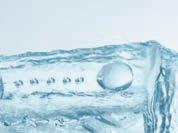























info@norchemcorp.com 1-800-442-4360 www.NorchemCorp.com May your Linen be Merry and Bright
Patent Pending
PANEL OF EXPERTS
Fine-tuning for increased PPOH



laundering: Water, Agitation (mechanical action), Time, Chemicals, Heat (temperature).
Afine-tuned laundry starts with a fine-tuned washroom.
My best advice for fine-tuning a washroom would be:
1. Automate where possible. The main objective of laundry automation is to reduce labor cost. Reducing the amount of employee handling will increase the pounds per operating hour (PPOH).
2. Proper maintenance. Performing daily washer and dryer maintenance helps to assure an efficient washroom. This includes checking your chemicals, pumps and lines. Nothing effects productivity as negatively as breakdowns. If it isn’t working, it isn’t helping. Performing proper dryer maintenance and making sure the dryers have proper airflow and temperature will reduce wet work, which reduces double handling, which increases efficiency.
3. Proper balance. Don’t overload or underload your washers and dryers. Improper loads will result in double handling of work, either due to poor washing or over/underdrying. Having the right balance of dryers and washers is crucial to effective production planning, and proper production planning is crucial to maintaining a balanced and consistent flow of product to all work stations. Proper workflow balance is the key to maximizing throughput. Poor wash scheduling will lead to constricted and inconsistent workflow, which in turn will lead to inefficiency and reduced throughput.
4. Do it right the first time: Limit rewash. When it comes to washing, whether it be in conventional washers or continuous batch washers (CBW®), the WATCH principle applies to proper
All of the these are necessary for proper washing. Decreasing one will necessitate increasing another. For instance, reducing the amount of time in a wash formula will require an increase of either chemicals, wash temperature or water level to compensate.
I know of many managers who, when a CBW goes down, their reflex action is to shorten the wash cycle on the other tunnels. The result of this action is to create mass rewash. Rewash results in washing items twice, yet getting paid once. Not the best business model, to be sure. While some rewash is to be expected, playing with wash formulas to shortcut the process, for whatever the reason, usually results in nothing good.
weight requirements in order to realize the potential output of any laundry operation.
The second step is to plan for success. There should be a game plan that is formulated and discussed with all key washroom associates at the start of every day. No two days in a laundry operation are the same. Different customer/internal needs, product mixes and workloads dictate the way the washroom should operate that day. If you simply fall into a routine, you will quickly find yourself unable to adapt to the ever-changing environment that laundry brings.
The third step is to validate your wash/dry formulas. Partner with your preferred chemical vendor and ensure that your wash cycles are appropriate. Is your standard terry formula running at the programmed length for any particular reason? Can it be shortened and still achieve the same quality results? How about the dryer formula? Is the terry actually finished earlier in the cycle, but the formula continues to run? These are all items that can be fine-tuned and can result in unrealized efficiencies.
potential output. In fact, you may find that your increased efficiencies in the washroom force you to run the same productivity exercise on your finishing side.
The washroom is the heart of a laundry operation. Your ability to operate a profitable laundry starts and ends with your washroom’s productivity. Anyone that has experience within the laundry industry can attest that the solution is not always maximum output for the maximum period of time. Instead, washroom efficiency is achieved with extensive training, proper planning, valid wash/dry formulas and continuous maintenance.
The first step to maximizing washroom PPOH is extensive training. The difference between operating with an improperly trained washroom associate vs. a properly trained associate could cost your operation up to five to seven loads an hour. Add these losses up over a year or several years of operation and we are talking millions of pounds of lost productivity.
Associates must be capable of operating the washroom equipment efficiently, varying product types and loading to defined
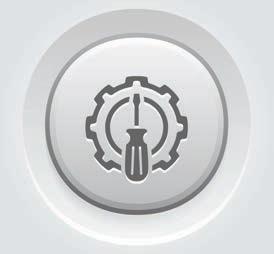

The last step involves my favorite topic, maintenance. Have you noticed a sudden uptick in stains? Chances are it’s not the chemicals, as previously they were working just fine. When is the last time someone at your operation looked at your water softener to ensure it is working correctly? How about a particular dryer that starts dropping wet linen? Is your immediate reaction to increase the dry time? Why not ensure that the dryer is running at 100%?
The continuous maintenance of our equipment ensures that our washroom has the ability to produce quality products and maximum productivity every day we operate.
As you can see, the washroom is a complex and vital part of any laundry operation. There is no single step an operation can take to ensure success. Instead, laundries must constantly step back and analyze their practices.
I have no doubt that if you are able to master the aforementioned items, your washroom will be pushing the limits of its
There’s much more to pounds per operator hour than just the washroom. This involves every aspect of the production operation, from soil to pack-out.
First, well-labeled soil bins, training route personnel (and/or dockhands) to unload correctly, and cart flow into the washroom staging or weighing area all go a long way in pre-sorting soil for efficient counting and machine load-building. The counting deck should then be able to sort/ count goods faster and weigh/ stage goods in machine load order.
An efficient washroom includes all washroom personnel working in concert to stage, load and turn merchandise within stated standard machine downtimes. This is enhanced by floor supervisors constantly looking at load sequence and tweaking to
(Image
licensed by Ingram Publishing)
flow the right goods to the right department at the right time, so there is no departmental downtime (waiting for goods).
Within each department, production standards must be stated, posted, monitored, retrained and managed. Floor supervision must keep a constant eye on pack-out merchandise needs for the day, in order to limit the amount of disruption—chasing down needed goods to fill loads. Pack-out and load-building areas should be organized so that staging feeds the routes in needed order (early to late).
Each and every job in production must have a stated standard. Each and every person in production must have a posted output against their standard. Below-standard operators should be coached and managed through the process, whether that is positive reinforcement to the individual or group, or whether it is in taking action— regroup, re-motivate, retrain, replace.
14 DEC E MB E R 2017 | AMERICAN LAUNDRY NEWS www.AmericanLaundryNews.com
“My laundry works fairly well, but I know we could get more PPOH through. What suggestions do you have for fine-tuning a washroom?”
Management should also keep a keen eye on head count vs. the aggregate standards. It’s simple math. If you are paying for too many “person-hours” (overstaffed), your PPOH will go down. If the operation can maintain standards and generate needed goods with less personnel, See EXPERTS on Page 16
Healthcare Laundry
Charles Loelius CleanTex, Irvington, N.J.
Hotel/Motel/ Resort Laundry Nick Fertig
Rosen Hotel and Resorts, Orlando, Fla.
Textiles
Steve Kallenbach
ADI American Dawn, Los Angeles, Calif.
Ultra and Nanofiltration: The Modern Solution for Ultra Clean Water.
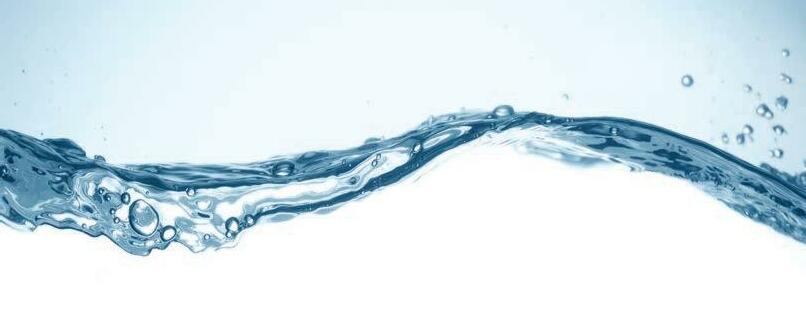
It’s a whole new way to filter water. Using our exclusive hollow-fiber ceramic membrane, the PurePulse® system operates in the lower end of the ultrafiltration range into nanofiltration. Filter total dissolved solids and dyes as small as 5 nanometers – no need to cool water. This is innovative membrane technology for the modern age.
Recycle 70-80% of your facility’s water
Filter your water while it’s hot, saving energy
Self-cleaning ceramic membranes have 10 year warranty Reliable and long service life
Less expensive than RO technology
Affordable, low running costs and fast ROI
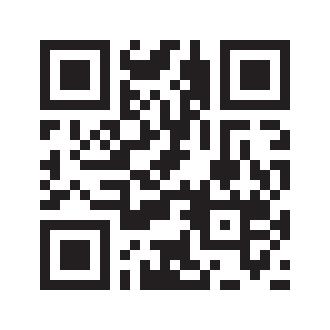
PurePulse system has a small footprint that won’t change as you expand with additional, stackable membranes.
Patent pending.
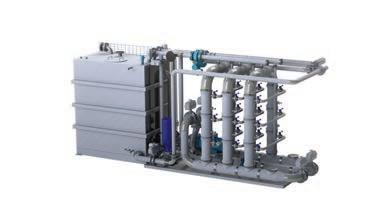
504-712-7700
www.PurePulseSystems.com
do it.
Talk regularly with front-line production associates. Are there inefficiencies in the way their flow works, or in/around their workstations, or perhaps in their personal comfort (heat, mats, uniform fit, etc.)? The front line knows how to make it happen, if you ask and listen.
Management should regularly (at least weekly) review all equipment maintenance with their chief engineer. Machines that work to speed and spec are much more efficient (and safe) for the operators.
Finally, post the PPOH clearly in the plant (perhaps at the entrance to the break room). Post the outcome right next to the established PPOH standard for the operation. Update it at least once daily so that every single associate sees the daily “grade” against group standard.


Operators have a number of metrics to monitor their production efficiency. There is nothing more powerful than a correctly established PPOH goal and a daily monitoring system to establish, maintain and improve product flow, fulfillment efficiency, merchandise cost, productive labor and profitability. Go PPOH!
the morning that washers sit idle until the operators can complete the cycle of unloading and loading. You could be losing as much as two to five loads a day in idle time, not to mention the possibility of having to keep your boiler and air systems up and running until the loads complete.
Are you underloading your machines? This could make a huge hit on PPOH, as well as the costs for water, chemicals and other overhead.
It’s the little things we sometimes miss that could lead to thousands of dollars in savings over the course of a year. As this year comes to an end, I wish everyone Happy Holidays and a prosperous 2018!
our staff, showing, training and re-educating them on ways to be more efficient at what they do on a daily basis. Repetition is good and will ultimately lead to more PPOH. However, if we do not look at our production processes daily, weekly and monthly, we will fall behind and maybe, just maybe, see a sudden drop in our production levels.
As managers and owners, we need to get our employees involved in making suggestions on how they feel they might be able to increase productivity in their departments. After all, they live it and do it on a daily basis. Who knows the job better than the one who does it day in and day out?
Improving your plant layout is another way to possibly increase your productivity. Revisit your current plant layout. Have you added any new machinery lately? Are you now processing product that was never processed before that “might” be causing a blip/ hiccup in your flow? Have you added new accounts that have caused you to all of sudden be a little short on space?
fries and chocolate shake just like that struggling salesman from Illinois? Happy Holidays!
damaged goods become mixed with stained goods going back for a rewash. There’s no point in fully washing something over that’s just wrinkled or no longer useful at all. Make sure after running a rewash load that you remove any goods that are unusable from the workflow. Don’t let them get into a cycle of being washed and handled over and over.
This is an interesting topic for me, as I am directly related to assisting customers with finding efficiencies by introducing automation technology in the washroom. When visiting with customers, it is essential to find out the production goal, as every laundry is different.
One of our representatives told me his grandfather said that nine out of 10 problems in a laundry can be tracked back to the washroom in some form, so it is a great place to start looking for ways to improve.
Try to place high-volume classifications closer to the bag rail elevator, feed conveyor or washer where they are loaded. This will eliminate steps and transport of the most-washed items, like sheets, spreads and bath blankets.
Do small things to enhance the work environment where and when it’s possible—fans, antifatigue mats, etc. Making employees as comfortable as possible keeps them from slowing down, taking more or longer breaks, and making mistakes.
Just the other week, while flying home from vacation, I had a chance to watch a movie titled The Founder. It is the true story about a struggling milkshake machine salesman from Illinois named Ray Kroc. Ray turned two brothers’ innovative fast-food eatery, McDonald’s, into the billiondollar burger franchise it is today.
The McDonald brothers had developed a speedy system for making burgers, fries and milkshakes and delivering food to their customers quickly and efficiently.
As we all know, the premise of fast food joints like McDonald’s is for us to order and get our food to go, fast and hot.
By revisiting your plant layout, you might just find by moving equipment around that you find some ways to save time and increase productivity.
Look at your current equipment. Is it old, worn and still working on old technology? Are you ready to step up your game and start processing with new automated technology?
Do a spaghetti diagram of the workflow. Use a colored marker on a drawing of your facility. Study how and where the goods travel and flow from the time they arrive until they go into the washer. Look for ways to shorten and eliminate movement where possible.
It should go without saying that formulas must be programmed for efficient machine operation. Beyond that, I’ll answer this question with a few other questions, as well as their effects on efficiency.
Does your team pre-stage work to go into a washer? If not, think about the lost time that occurs when a washer sits idle awaiting the team to get product to load.
Is your washroom “balanced” (i.e., you have the appropriate numbers of washers, dryers, nodry stations, carts, conveyors and/ or slings)? Following on my previous comment about loading the washers, they must also be efficiently unloaded, so there has to be a place for goods to move.
Are you able to produce the same amount of work during the day, even if one or more of your washroom operators is on vacation or absent for the day? If so, you might rethink your manning requirements.
Does your facility allow all loads to complete their wash cycle at the end of the day? If so, consider the amount of time in
During the movie, I was in awe at how they prepared the hamburgers and food so quickly. The theme of the movie was speed and number of burgers made per person.
The brothers did not settle for mediocrity; their goal was to have the most efficient production line for making product as quickly as possible and would not settle for anything less. They were constantly looking for innovative ways to produce product faster and service more customers while keeping their customer base happy and anxious to return for more.
This made me think about our laundries and how we as successful laundry operators always seem to be searching for ways to make our washrooms and production facilities run smoother and more efficiently while increasing our PPOH. How to fine-tune the operation to get more PPOH through our washrooms and plants seems to be a never-ending story in our industry.
Ongoing training continues to be one of the better ways for us to accomplish smoother operating and increased productivity. As owners and managers, we need to constantly be working with
Today, it seems that plants and laundries are doing more with less. The new modern equipment available to us these days has taken, and continues to take, automation to a new level. The new automated machinery and technology available on the market these days allows us to produce more product using fewer people.
With all the new technology available to us today, it allows us to not only produce more product through our plants, but also enables us to move staff around within our facility, thus helping to solidify and replace our weak links in our production flow. This, too, will help increase and have a positive impact on our PPOH.
Then, using a different colored marker, add a spaghetti diagram of the workflow from the washer to the dryer and the finishing machinery. Look at the travel and movement of the goods through these processes. Again, shorten and eliminate movement where possible.
Lastly, use a third colored marker to add the pathways of finished goods leaving the facility or going into storage. Can you shorten anything? Save any more movement? Don’t rule out moving equipment if it will improve workflow. Such improvements will add up for years.
How many times are the soiled linens touched, moved or handled? Anytime you eliminate an instance where something is handled, you increase efficiency. And don’t forget the pathways of your employees walking back and forth. More steps cost you labor dollars.
Concentrate on choke points if people or goods are waiting at any point for the next step in production.
Don’t forget to get feedback from the staff. Ask them what would speed things up or make it more efficient. Each month, try to get people thinking of something different, such as ways to save steps, stop mistakes or to reduce wasteful rework. Reward good ideas that work with a gift card.
From a chemicals supplier’s perspective, see what your chemical company can offer to track washer turn times or formula run times. Besides pounds produced, many chemical systems can add such data to reports.
We have customers who display the daily turn times for the washroom like some laundries post the pounds processed. Reward improvements in turn time. Or post the total loads completed. Note the number of rewash loads; these should be minimal. Ask your representative to address rewash, formula run times, etc. See if they can shorten wash times or rinse times. If the rewash goes up, you’ll know to go back.
One thing I have learned over the years is that there is always room for improvement. Never settle. I, for one, am always looking for ways to get more done and run my daily life smoother.
What is that one little simple edge that can help you get more done so you can enjoy your Big
Track and post pounds produced each day so washroom staff can see it. Anytime a record is broken on pounds separated or pounds washed or pounds ironed per hour, etc., provide a reward. Celebrate those little victories— maybe pizza, ice cream, staff meeting recognition, go home early on Friday, etc.
Work on eliminating rework. Strive to eliminate sorting errors so towels don’t end up with sheets, etc. Ensure goods are washed on the correct formula. Don’t let wrinkled or physically
However, in some accounts, the washroom isn’t the slow point. It’s drying, ironing or folding.
If you have the time, consider lengthening wash times to get better results. Yes, lengthening. The water, heat and chemicals are already in there. A couple minutes longer in the wash bath may get more soil and stains out, thus reducing rewash.
Ask your chemical representative for ideas just like you ask your staff. They’ve been in lots of laundries and seen many approaches to a lot of problems.



16 DECEMBER 2017 | AMERICAN LAUNDRY NEWS www.AmericanLaundryNews.com
Mac,
ALN Continued from Page 14
Experts
Uniforms/ Workwear Manufacturing
Scott Delin Fashion Seal Healthcare Seminole, Fla.
“ONE THING I HAVE LEARNED OVER THE YEARS IS THAT THERE IS ALWAYS ROOM FOR IMPROVEMENT.”
—SCOTT DELIN, FASHION SEAL HEALTHCARE
“EACH MONTH, TRY TO GET PEOPLE THINKING OF SOMETHING DIFFERENT, SUCH AS WAYS TO SAVE STEPS ... ”
—DAVID BARBE, U.N.X. INC.
Chemicals Supply
David Barbe U.N.X. Inc., Greenville, N.C.
Consulting Services
Jon Witschy Spindle, Woodridge, Ill.


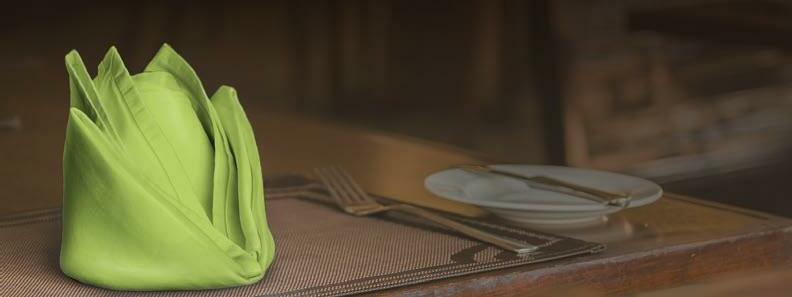




















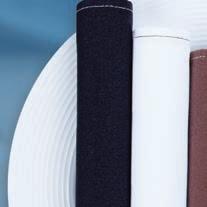
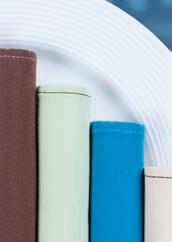







800 821 2221 | imagine@americandawn.com | americandawn.com
by TM The LunchkinTM is intended to extend the color o ering of The Greenie. Six additional colors to replace paper napkins in any lunch setting. Beyond the environmental benefits of The Greenie, The Lunchkin creates a fine dining experience -- at lunch. And the cost is about the same or less than paper napkins! Made in USA Fabric
Milliken. Made in USA Fabric By Milliken.
Replaces single use paper napkins at a lower cost
Creates a better dining experience and sets you apart in the marketplace
Lasts over 100 wash cycles
Never ironed, less energy use
Saves up to 5 billion pounds of trash per year Signature Plus is a registered trademark for Milliken & Company for fabrics. • Smaller 15” x 12” Lap Size
Your table linens touch every Customer at every event. Your linen needs to speak their language… fresh, clean, safe, consistent, reliable, and yes - elegant. They count on it. Together, ADI and Milliken have set the standard of linen excellence for decades. USA made Signature Plus fabric. Soft luxurious hand, consistent long-lasting color. Whites that stay white, and colors that stay bright. ADI American Dawn. The world’s leading supplier of Milliken Signature table linen products. Count on us. The Greenie® is America’s choice to replace paper napkins! At breakfast and lunch, if every American uses reusable linen napkins instead of paper, we can save 60,000,000 trees per year! That means cleaner air, less water use, less energy use, less waste in landfills, less toxic paper production chemicals. And the best part... Money raised through the sale of this product is given back - to educate our children on keeping the planet clean and safe. 84% of Americans prefer cloth vs paper at the table. The Greenie® Because it’s the right thing to do.
Lunchkin
By
•
•
•
•
•
Laundry disaster recovery planning
“phone tree.”
BY MATT POE, EDITOR
RICHMOND, Ky. — This year has been one for the books when it comes to natural disasters.
Fires, floods, hurricanes, tornadoes and other events have disrupted lives. They’ve also disrupted laundry and linen services.
Add to these external events internal issues, like equipment breakdowns, injuries and labor disputes, and it hasn’t been an easy year for some laundries to keep processing and providing linens.
That’s why it’s key for businesses to have an emergency response plan to not only help recover from disaster, but also to help others recover.
“Your emergency response plan should be developed in the context of your organization,” says Bob Corfield, CEO, Laundry Design Group LLC. “Look at external and internal emergencies. Things that happen to the area and internally within the laundry should have a response plan. Look at potential threats and best practices. Then replacement vs. continuation planning.”
Corfield and James Mangini, senior director, sterile processing and linen services, Maine Medical Center, Portland, Maine, discussed disaster planning during the Association for Linen Management (ALM) webinar Plan Like a Prepper: Emergency Management for Textile Care Services Professionals.
“The old way to respond to overall disaster planning was to try to develop a plan for every eventuality,” Corfield says. “The new paradigm shift a few years ago was to have a core program of response management so you understand what risks you really want to plan for; you look at an all-hazards approach and a multidisciplinary collaboration within the context of your organization.”
He says a company has to look at what is going to work with its core strengths and capabilities to make a plan. Then, it’s time to run drills to see if it’s a good plan, identifying any holes. Finally, keep looking at the plan to adapt and improve it.
“You don’t show up at game day without having practiced all week long, without having a game plan on how you’re going to execute,” Corfield says. “You need to know what the plan is. Everyone needs to know what their role is.”
“You want to go through exercises,” Mangini adds. “When you have an event, you don’t want to hope you’ll get it right; you want to know you’ll get it right.”
TYPES OF EMERGENCIES
External emergencies that can impact a laundry’s processing capabilities can include natural disasters, power outages, water supply emer-
gencies, sewer line breakage, etc.
“I’ve personally been involved with a water system failure that actually caused boil water advisories, which actually put everyone on bottled water in the hospital, as well as the community,” says Corfield. “We had to reduce washing capability because that was water needed for potable water. We had to come up with alternative sources for how we would run and operate, and we, fortunately enough, had plans for what we would do in that respect.”
Internal emergencies that can affect a laundry include equipment breakdowns, fires or chemical spills.
Mangini shares a time when a chemical spill occurred in the hospital laundry plant.
“We had to have the county response team show up, and we definitely learned some lessons from it, even though we thought we had a solid plan,” he says. “The fire command takes over, and you don’t get your building back until they say it’s good to go. We had linen sitting ready to get out the door, but we couldn’t enter the building.”
DISASTER RECOVERY PLANNING
Disaster recovery planning (DRP) starts with mitigation and prevention, Corfield says. That means limiting manmade and negligence incidents. That’s followed by preparedness.
“We really want to make sure we have a plan in place for most eventualities,” he says. “Then we know what our response is going to be. Then, what are we doing to recover, back to a normal operation. It’s full life-cycle management. DRP is a step-by-step procedure to return business to normal operation after a catastrophic event.”
Corfield says the goals of the plan are for a laundry to become operational as quickly as possible and to minimize the negative impact to the business or operations.
“We want to maintain a positive outcome through disaster response,” he says.
How do you do that? Simply put, clearly define the course of action and responsibilities for team members.
“If communications are down, do people know where they should be responding?” he says. “Even in a facility, who is the responsible person, where do people go, how do you prepare?”
Laundries need to eliminate delay due to confusion, shock, absence of key personnel, etc., Corfield says: How will the laundry respond? What is the backup plan for personnel? How does management plan to overcome initial shock and confusion?
Mangini suggests that laundries make sure they have an updated
“Monthly, we go around to make sure we have the correct phone numbers in case we have to trigger a response in order to call them in,” he says.


Corfield says it’s important to strengthen relationships with key suppliers, customers and employees before events take place.
“It’s the people around you that are going to help you navigate successfully through any response,” he says. “We’ve seen a lot of disasters over the past few years, and not being ready is not an option.”
A solid response plan, according to Corfield, not only includes responsibilities, but also recognition, alert, communication, activation, notification, operations and recovery.
“Those in healthcare organizations can probably see a little of what happens related to your medical response teams, how they go into effective triage mode when they are inundated with a large number of injured individuals,” he says. “They start by doing assessments. They have roles and responsibilities. They practice those; they know to deal with an actual influx of a large number of individuals.”
It’s also essential that a plan include short-term and long-term elements.
“You have to have a full understanding of your resources,” Corfield says. “Make sure your people have a full understanding. Proper equipment, fully functional, time limits, training. With every good plan, it’s important protective equipment is prepared. Where is your supply? Is it protected? Is it monitored?”
BUSINESS CONTINUATION
After the responding to the event, how does a laundry manage business continuation?
Corfield says that there has to be a production plan. Will the laundry move production to another facility or find limited ways to produce?
Mangini recommends stockpiling linens for emergency response.
“We have a stockpile because our director of emergency preparedness and safety, when that role came on board, he focused just on operations but soon realized the importance of laundry and linens that get supplied in the hospital setting,” he says. “We had a malfunction of our tunnel, which kind put us on a crisis mode. We were shipping our linen off to our backup supplier.”
Because of that event, Mangini says the hospital worked on getting space in a warehouse adjacent to the plant. That way if there was ever a fire in the plant, the hospital always had a backup source of linen available.
“We took the core components for the average daily need of the hospital, and we try to plan for about a 72-hour turn,” he says. “We worked very closely to set it up and work on rotating the stock through so it’s room-ready, if you will, for the patients’ needs.”
to review the relationships on an ongoing basis to be sure the backups can meet requirements.
In order to continue production internally, however, labor needs must be addressed during events.

“Your first resource, outside of the products you produce, are additional labor needs,” says Corfield.
Mangini relates a time when a snowstorm heading for the Northeast was predicted to dump 16 inches of snow.
“We had never shut down, but we were going to,” he says. “Some things we had to look at were after the snowstorm, how were we going to get our staff to where they need to be? Some plans included renting four-wheel-drive SUVs and having the security team drive to pick people up, in case they needed a ride. There was also a list developed of other departments that had staff available to come out and handfold linen if needed.”
Corfield says a laundry also has to plan for getting product to customers during emergency situations.
Corfield also says that during any event, a laundry needs to have a program at the end of the response plan to capture data.
“Anyone who’s ever been though a response to an emergency, there will be questions as to what went where, what was the impact, what was the cost, what came back, what did we do, how many hours did your employees and staff have, what were contractor costs,” he says.
“There’s going to be all of the financial reporting that you’ll have. It’s really important to have a plan to capture as much of that as possible so that you can try to understand the financial impact of responding and making sure in your after-action reporting you have those things as well.”

According to Mangini, the laundry at Maine Medical Center has a threephase approach to linen conservation. One phase involves the plant being down for maybe six hours. Another phase is for being down six to 12 hours, and the third phase is for being down 12-plus hours.
“We have agreements with other facilities to help process if need be,” Mangini says. “We have two official written agreements and couple word-of-mouth. We’ve put these agreements into effect both for us and have helped other laundries in my career here. We visit this annually to see if we’re still good with these agreements to continue.
“We’re all in the business together. Even though we may compete against others, no one wants to have a disaster and not have a helping hand, at least in our region.”
Corfield agrees that it’s essential to have agreements with local and out-of-town laundries, to know where the linen is going, and



“You need a service plan, a temporary office and warehouse for loading and unloading and storage,” he says. “On top of a plan, have an administrative core that people can report to. Critical service vehicle replacement. Inventory replacement requirements and ongoing communication.”

On the administrative side, Corfield says a laundry’s IT department needs to have a plan for system replacement and recovery. And there needs to be a plan to retain key personnel, especially if the plant won’t be operational for some time.
Finally, Corfield says he can’t stress enough that communication with customers, stakeholders and staff is essential during an event.
“There are many different hazards nationwide. It’s not effective to plan for every different disaster you can think of,” Corfield says. “All-hazards planning encompasses general principals and applies them to the slight differences for each incident type. Gone are the days of 50 different plans for each type of incident that all look very similar. We now have one plan, with incident-specific annexes or appendices that address the differences.”
ALN 18 DECEMBER 2017 | AMERICAN LAUNDRY NEWS www.AmericanLaundryNews.com
Ways an operation can overcome internal, external events
“IT’S THE PEOPLE ... THAT ARE GOING TO HELP YOU NAVIGATE THROUGH ANY RESPONSE.”
—BOB CORFIELD, LAUNDRY DESIGN GROUP
(Image licensed by Ingram Publishing)
Cleaning boosters can enhance process
 BY MATT POE, EDITOR
BY MATT POE, EDITOR
CHICAGO — Laundry and linen services are always looking to improve their operations, looking for an added boost, if you will.
While most cleaning is accomplished by chemistry, heat and mechanical action, there are a few “boosters” that laundries can use to enhance their process and save resources and money.
One well-known booster on the market is ozone. Jack Reiff, president of WET-TECH in Worcester, Mass., says ozone is a renewable activator for the chemistry already being used in the wash.
“It conditions water, oxidizes soils, cleans while in the wash wheel and enhances the chemistry,” he says.
“It’s proven ozone saves almost 80-90% energy to heat water,” says Jim Gross, president of Ozone Water Technologies in Tryon, N.C.





Reiff adds that ozone allows a laundry to use less water.
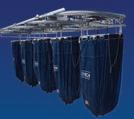
“During wash process, you’re actually cleaning the water while you’re washing,” he says. “So, you could almost eliminate one or two rinses because it’s rinsing while it’s washing.”
Ozone works best on organic soils. Gross says the ozone attacks particles in the water to oxidize organics. It also destroys bacteria so that it can’t reproduce.
According to Gross, ozone isn’t recommended for inorganic, oilbased accounts. Normal wash is needed to remove that type of soil.
Ozone enhances cleaning and disinfection with most chemistry, but there are some caveats. Reiff says ozone neutralizes chlorine bleach, which he says has caused graying of linens. On the other hand, it enhances peroxide bleach.
Laundries also have to ensure their equipment is ozone-resistant, Reiff says. Ozone will decompose rubber, bronze and brass.
That’s not the case with textiles. Reiff says ozone will work on all kinds of textiles. In fact, Gross says that a study by the International Fabricare Institute (now the Drycleaning & Laundry Institute) shows that using ozone can extend linen life by up to 50%.
Along the same lines as ozone, hydroxyl radicals are being used as an oxidizer.

“It’s a very reactive oxidizer,” says Andrew Rupnow, CEO of OMNI Solutions in Baraboo, Wis. “It’s a very good product for reducing odor, bacteria, and improving whiteness in linen.”

Rupnow says that hydroxyls are formed through combination of peroxide, ozone and UV light.

For use in washer-extractors, Rupnow says hydroxyls are injected into the cold-water line of the washer. Secondary dosages are applied using a chemical pump into the washer, just like any other chemical.

“On a tunnel washer, we pull the press water instead of drawing it out and bringing it back to the wet-out at the beginning,” he says. “What we do is basically create a recirculation loop from the rinse zone to the press to our system back to the rinse zone.”
He adds that the process can reduce fresh water intake 20-40% and reduce colony forming units.




Finally, there are silver ions. Sean Morham, CEO of Applied Silver

in Hayward, Calif., says that it is known that silver has antimicrobial properties and kills bacteria through a triple mode of action: cell lysis, suffocation of the bacteria and inhibition of DNA replication.
He says silver ions, the active antimicrobial component of silver, binds to textiles through a charge-based interaction. In this form, silver ions provide continuous antimicrobial activity against microbes that come in contact with
the textiles.
Morham says his company’s system, SilvaClean, doses silver ions into the final rinse of the laundry cycle.


The treatment imparts antimicrobial properties to a wide range of fabric items, including patient bedding, gowns, professional apparel and privacy curtains each time they are laundered, protecting them in transport, storage and use from odor- and stain-causing bac-
teria, mold, and mildew, he says. The technology can also provide similar benefits to other sectors such as sports apparel and gear.
“All textiles that can go through the laundry process can be treated with SilvaClean silver ion chemistry,” says Morham.
The laundry process will always involve chemistry and equipment, but operators can look into added boosters to enhance their production.
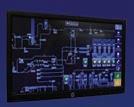
www.AmericanLaundryNews.com AMERICAN LAUNDRY NEWS | DEC EMBER 2017 19
ALN
kannegiesser-etech.com 612.722.1366 Kannegiesser USA and ETECH are now Kannegiesser ETECH SMART LAUNDRY seamlessly integrated equipment and systems When you combine two companies, you transform a business. When you combine two leaders, you transform an industry. ALN_Jr Page.indd 1 5/26/17 2:07 PM
Reusable vs. disposable underpads in healthcare
Experts share differences, how to convert customers to reusables
BY MATT POE, EDITOR
SHAWNEE MISSION, Kan.
— The issue of conversion from single-use, disposable underpads to reusable in healthcare facilities is a major one.
It’s a challenge for linen services to educate customers why reusable underpads are better in patient care.

Janice Larson, vice president of clinical resources and consulting at Encompass Group LLC, and Virginia Meyer, director of client services at Crothall Healthcare, discussed the reusable vs. disposable challenge, and how to convince customers to go with reusable pads, during the American Reusable Textile Association (ARTA) webinar titled How to Convert Clients to Reusable Incontinence Pads.
Advanced, super-absorbent disposable pads began the “takeover” of the underpad market in 2008, Larson says. That’s when Medicare released a list of hos-
pital-acquired conditions, which included Stage-3 and Stage-4 pressure ulcers.
“Medicare would no longer reimburse the hospital for care associated with those two conditions, if the condition developed after the patient was admitted to the hospital,” says Larson.
Prior to that, if a hospital used a disposable, called a chuck, it only cost 10 cents, and it was bed protection, not a clinical product, she says. Companies had a more expensive absorbent product, but hospitals weren’t interested.
Once ulcers hit the Medicare list, healthcare facilities were willing to spend more money on incontinent care products.
At the same time, reusable pads advanced and became much more absorbent—in Europe.
Larson says wound care nurses were not aware of reusable alternatives.
Then, value analysis became more important at hospitals.
“They brought in profession-
als, mostly nurses, who now are in charge of evaluating products on three things: the intersection of cost, quality and patient outcomes,” Larson says. “All the sudden, we had an audience concerned with patient outcomes at
a reasonable cost. They saw how expensive disposables were, and how cost-effective resuables are.”
COMPARISON
Both disposable and reusable underpads are advanced, says
Larson. Disposables have a superabsorbent polymer in the pad to absorb a patient “void” upon contact. Often, disposables have small holes to allow for vertical airflow, which is essential to having an underpad on a low-air-loss mattress.
“The problem with small holes is fluid can leak onto the fitted sheet,” she says. “The polymers activate completely on void and pretty much block the small holes completely and don’t allow for additional moisture. Also, they may tear after voided upon or tear when trying to position the patient. And there’s a tendency to use more than one, to layer.”
On the reusable side, Larson says the more absorbent pads have soft facing, which is gentle on patient skin. Most have a synthetic quilter inside to absorb moisture.
“The way this works, the polymers in the disposable capture the moisture and hold it in the middle of the pad. In the reusable,
TRSA introduces new membership category for customers

ALEXANDRIA, Va. — Based on the tremendous growth, awareness and interest in Hygienically Clean certification, TRSA, the association for linen, uniform and facility services, is launching a new membership category for individuals responsible for overseeing such services to their facilities.

The association says these customers will have access to specific TRSA best practices and resources, including training materials, to help them better manage the use of linen, uniforms, garments and other reusable textiles, as well as facility services.
“Since the launch of Hygienically Clean, TRSA has been reinvesting all proceeds from the programs into educating consumers regarding the importance of training and proper handling of clean and soiled textiles,” says TRSA President and CEO Joseph Ricci. “This has resulted in the development and distribution of research, white papers, webinars and interactive training regarding best practices to thousands of individuals responsible for selection and management of linen, uniform and facility services.”
Through outreach campaigns, including presentations, healthcare and food safety conference exhibits, webinars, social media, and advertising, TRSA says it has generated nearly 3,000 individual interactions
and tens of thousands of digital contacts. According to the association, these have helped medical facility staff properly handle soiled and clean linens, directly reflecting the success in communicating how Hygienically Clean Healthcare is valuable in verifying laundries’ best management practices (BMPs) and quantifying healthcare textiles’ cleanliness to ensure they pose negligible risk to medical facility staff and patients.
“The response to this outreach proves that the foundation of Hygienically Clean is stronger than any other healthcare laundry certification program attempted,” Ricci says. “Initiated by linen, uniform and facility services operators and continuously executed by them at the program’s highest ranks of management, Hygienically Clean helps demonstrate that certified facilities know the proper process and outcome measures of effective healthcare laundering.”
As subject matter experts on quality assurance and BMPs in the industry, TRSA says launderers serve on the Hygienically Clean Healthcare Advisory Board with medical professionals who offer scientific expertise and a laundry customer’s perspective.
By partnering with organizations such as the Association of periOperative Registered Nurses (AORN) and the

Association for Professionals in Infection Control and Epidemiology in launching its APIC Industry Perspectives website, TRSA says viewers have been attracted to these Hygienically Clean initiatives:
• The Six C’s: Handling Soiled Linen in a Healthcare Environment. This training video, aimed at helping hospital staff comply with OSHA regulations, drew more than 1,000 unique page views over four months on the site, says TRSA. The APIC Hygienically Clean page linked viewers to the YouTube trailer previewing the video, shipped free to them upon their request by mail on a flash drive. Since The Six C’s premiered in late 2015, the trailer has been viewed 2,100 times. There have been more than 1,000 requests for the flash drive and previous DVD version, with 300 of these requests in 2017.
• Handling Clean Linen in a Healthcare Environment. From another APIC Hygienically Clean webpage, more than 100 viewers downloaded this white paper, which advises medical facility staff on tactics to avoid compromising the safety of healthcare textiles once these are within their facilities, according to the association. Promotion via social media and ads in other business/ scientific media have generated another 50 downloads to date, with hundreds more anticipated due to an ongoing campaign with Infection Control Today TRSA says Hygienically Clean had its most successful exhibit at June’s APIC Annual Conference in Portland, Ore., cap-
turing contact data on about 180 attendees of the show. Earlier in the year, in the first promotion of the certification to the outpatient/specialty medical market, more than 120 leads were captured from attendees of the Ambulatory Surgery Center Association (ASCA) expo in May in Washington. Ads in ASCA’s e-newsletter produced almost 140 clicks, prompting viewers to learn more and download the latest Hygienically Clean white paper, Environmental Safety in Outpatient Care
Previously, Hygienically Clean exhibited at the annual Association for the Healthcare Environment (AHE) Exchange, with plans to return in 2018.
These contacts created awareness and generated prospects for the first-ever Hygienically Clean webinar created for the benefit of healthcare professionals, TRSA says. What Healthcare Laundry Inspectors Uncover, aired in August, attracted more than 100 of the professionals, detailing the Hygienically Clean Healthcare inspection checklist.
20 DECEMBER 2017 | AMERICAN LAUNDRY NEWS www.AmericanLaundryNews.com
ALN
Clean campaigns
in consumer education,
association
Hygienically
indicate interest
says
Experts say reusable underpads offer cost savings and usability benefits to healthcare facilities. (Photo: Encompass Group LLC)
“SINCE THE LAUNCH OF HYGIENICALLY CLEAN, TRSA HAS BEEN REINVESTING ALL PROCEEDS FROM THE PROGRAMS INTO EDUCATING CONSUMERS ... ”
—JOSEPH RICCI, TRSA
the synthetic soaker absorbs fluid and then pulls it away from the center to the edges, away from the patient’s body,” she says. “While it does not have vertical airflow, because it has a barrier backing to prevent leakage, it does have horizontal airflow, breathability allowed by three layers of construction.”
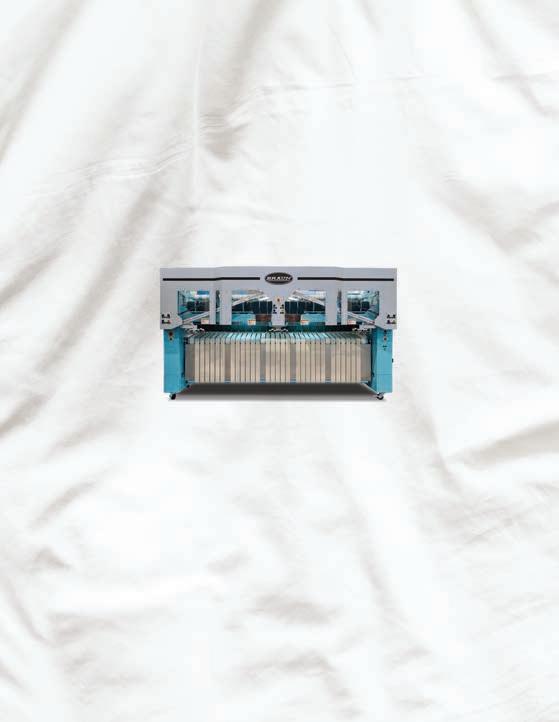
In addition, the reusable can absorb more than one void.
“We would, of course, never recommend that you leave the patient on the pad for more than one void, but those instances happen, and this pad can absorb it,” Larson says. “It’s also quite strong as a positioner.”
She admits that disposable and reusable underpads are comparable in absorption. However, disposables add medical waste. They also have to be inventoried and stocked; they take up space.
“Often, they’re packaged in multiples, say five or 10,” she says. “When a package is opened, the rest might be thrown out or sent home with patients.”
Disposables have a low perceived value because they’re made out of paper, says Larson.
“While expensive, they can be used for cleaning, place mats, and nurses don’t necessarily see a difference in high-tech, higher-cost disposables and previous, cheaper editions.”
And healthcare personnel aren’t used to comparing the savings between a reusable and a disposable, she says. And the cost savings are substantial.
A basic comparison between the cost of a disposable pad and that of a reusable pad comes to $1.52 for the disposable compared to 52 cents for the reusable, Larson says. That includes storage, handling and processing of the reusable pad, which lasts about 100 uses, compared to the single-use disposable.
“This is very important to go over with the customers because they are not used to comparing an item that has multiple uses to a disposable item that only has one,” she says.
CONVERSION
So how can a laundry and linen service shift a healthcare facility from using disposable underpads to reusable ones?
Meyer experienced such a conversion in 2016. In March of that year, she says Crothall began a new relationship with a hospital in Tucson, Ariz., along with its freestanding women’s center and 17 urgent cares and clinics.
First, she says they worked on bringing down other costs, like soil-to-clean charges, and earned the trust of the leadership.
“Reusable underpads were a big focus in our plant, so it was a natural for me to go ahead and suggest that they take a look at these,” says Meyer. “I was given the green light to investigate any potential cost savings for them.”
She says they investigated how
many disposables were being used a day—1,500. Reusable usage would be around 500. Each disposable pad cost about $1.11, while the reusable cost 65 cents each.
“We estimated $500,000 savings annually,” Meyer says. “Even if they continued to use resuables at the same pace as the disposables, there was still a cost savings. It was easy to speak to that and get their attention.”
Once the go-ahead was given, Crothall used historical disposable data, national usage factors, unit bed count and general knowledge of the hospital
to establish pars for each user area, she says. Managers and administrators were included in
disposables were phased out and the reusables brought in.
Of course, there were “hiccups” with the conversion, Meyer says. These included staff leaving patients on pads for multiple voids because of the increased absorption rate, placing the reusable upside down so the soaker faced the bed and not the patient, and staff throwing away soiled reusable underpads.
change.” Meyer says.
Larson says there are a few things that can help make conversion go smoother. First, get nursing involved sooner rather than later. Make sure the right samples are used in training. Bring in product specialists to handle issues in the field.
And plan on spending time following up. It will take support time after introduction.
the discussion and agreed on the numbers. Training took place, the
“We addressed all of these things as they came at us, and I’m happy to say that since then, everyone has embraced the underpad and embraced the
“The bottom line is the return on investment in getting this business back is well worth the headache, and you have a lot of support to do it,” she says. ALN

www.AmericanLaundryNews.com AMERICAN LAUNDRY NEWS | DECEMBER 2017 21
PURPOSE BUILT ® BUILT TO SERVICE THE DYNAMIC NEEDS OF THE FLATWORK PROCESSING MARKET. Braun’s new Precision Series® Spreader/Feeder serves a wide variety of flatwork laundry processing needs from hospitality, healthcare, commercial linen providers, and general industrial laundries. Reliability Efficiency Safety Get the Advantage ISO 9001 CERTIFIED Learn more at gabraun.com WHAT’S NEW 1. Single Motor Servo Spread Drive Technology 2. Single Motor Servo Controlled Infeed Functionality 3. Patent Pending Spread Detection Device 4. Spread Carriages with Parallel Clamping Surfaces 5. Balanced Three Operator Station Design 6. Feed Station Clip 7. Single Point Transfer and Positive Center Point Spreading WHAT IT MEANS 1. High Speed Spread Tension Control 2. Provides Consistent Quality Feeding and Leading Edge 3. Automatically Identifies Flatwork Width 4. Exceptional Distribution of Clamping Force and Surface Contact Reduces Sheet Stress 5. Optimizes Space for 3 Operators and Two Carts. Enhances Productivity. Ergonomic. 6. Auto or Manual Function. Drastically Reduces Drops That Clipless Units Experience. 7. Exceptional, Accurate Centering and Quality Feed Results in Consistent Fold Quality of The Finished Product! ALN_Jr Page.indd 1 8/28/17 1:52 PM “WE ESTIMATED $500,000 SAVINGS ANNUALLY ... IT WAS EASY TO SPEAK TO THAT ... ” —VIRGINIA MEYER, CROTHALL HEALTHCARE
HLAC sees marked increase in accreditation interest, applications
PLAINFIELD, Ill. —Coming on the heels of EXCHANGE 2017, the Association for the Healthcare Environment (AHE) annual educational event staged recently in Florida, the Healthcare Laundry Accreditation Council (HLAC) says it is seeing a marked increase







in interest in the organization and in the number of healthcare laundries applying for accreditation.

“AHE again put on a wonderful, meaningful conference, similar to our experiences at the recent Clean Show (Clean 2017 World Educational Congress for
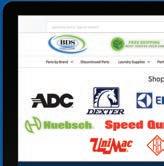
Laundering and Drycleaning) and APIC (APIC 2017 Annual Conference) events,” says John Scherberger, past HLAC board president. “Visitors to our booth showed much more than a passing curiosity about HLAC and its mission. These were professionals
who have realized the importance of having healthcare textiles arrive at a facility free of contamination.”
HLAC recently announced that it is seeking to add to its roster of inspectors in response to a marked increase in the number of healthcare facilities applying for
accreditation.

HLAC accreditation means the laundry meets HLAC Accreditation Standards, which have been developed based on federal regulations and guidelines as well as best industry practices. The standards are established as the minimum acceptable practice for the preparation of hygienically clean, reusable healthcare textiles for patient care, implemented and executed by accredited laundry facilities processing reusable healthcare textiles.
HLAC says its standards are internationally recognized. AHE has awarded its AHE Seal of Review and Recognition™ to the HLAC Accreditation Standards document.

“We’re looking at having another notable year for reaccreditations and new accreditations. This, following last year’s banner performance, when 61 laundries received HLAC accreditation,” Scherberger says. “We salute those healthcare laundries that have made and continue to make a commitment to a new level of excellence in the way they process healthcare textiles.”
According to HLAC, newly reaccredited or accredited laundries so far this year include:
• Aid to Hospitals Inc., Rochester, N.Y.
• Alsco Inc., Eugene, Ore.
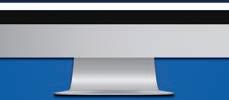
• Crothall Laundry & Linen Services, Wheeling, Ill.
• Crown Healthcare Laundry Services, Pensacola, Fla.
• Crown Healthcare Laundry Services, Selma, Ala.
• Crown Healthcare Laundry Services, Winston-Salem, N.C.
• Florida Hospital Laundry, Greater Orlando, Fla.
• ImageFIRST Healthcare Laundry Specialists, Clifton, N.J.
• ImageFIRST Healthcare Laundry Specialists, Clearwater, Fla.
• ImageFIRST Healthcare Laundry Specialists, Farmington, Conn.
• ImageFIRST Healthcare Laundry Specialists, Lincoln, R.I.

• K-Bro Linen Systems, Burnaby, B.C.
• Linen King, Springdale, Ark.
• Mediclean Linen & Laundry Inc., Commerce, Calif.

• Mission Linen Supply, Fresno, Calif.
• Mission Linen Supply, Phoenix, Ariz.
• Mission Linen Supply, Salinas, Calif.
• Shared Hospital Services, Portsmouth, Va.
• Sterile Surgical Systems, Tumwater, Wash.



• Textile Care Services, Rochester, Minn. ALN


22 DEC E MB ER 2017 | AMERICAN LAUNDRY NEWS www.AmericanLaundryNews.com
bdsparts.com Competitive Prices • Huge Selection • Reward Points • Free Freight* *On most orders over $99. Visit bdsparts.com for complete details. FREE FREIGHT* Mobile Friendly! Shop our Retooled Parts Superstore at bdsparts.com Over 55,000 parts in stock for immediate shipment Shop with your Smartphone, iPad and Tablet! ACO StandardPage.indd 1 5/1/17 4:33 PM ALN_Jr Page.indd 1 7/17/17 2:00 PM
Eyeing another notable year for new accreditations, reaccreditations
CITY Laundering breaks ground on new facility
Linen King opens new facility
CONWAY, Ark. — Linen King has finished its new, state-of-the-art facility here, the company reports.
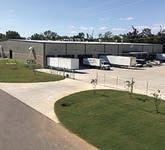

Linen King says the new facility, which expands on an existing Eastern presence in the United States, will allow it to offer clients support and provide more service necessary to continue fueling growth.
The 60,000-square-foot facility is designed to process up to 30 million pounds of laundry annually and contains three automated continuous batch washers, 21 dryers, a computerized
rail system for automatic loading, four ironing lines, and multiple pieces of folding and infrastructure equipment, according to the company. In addition, it will be able to boost employment from 50 to 100.
The new facility is located east of Linen King’s five plants in the Midwest, which includes facilities in Oklahoma, Arkansas, Missouri and Kansas.
Linen King says it processes more than 70 million pounds of textile products annually for hospitals and medical facilities. ALN
POLK CITY, Iowa – CITY Laundering is investing in a new operations depot to better serve its expanding Des Moines-area customer base, the company says.
With a permanent 10,800square-foot facility, CITY says it is committed to serving the area with a family-owned, industrial laundry provider.
“When we made the decision to service the Greater Des Moines area in 2010, we knew it was just a matter of time before we wanted something more permanent,” says Colin Wetlaufer, president of CITY Laundering. “We started in Des Moines with zero accounts, and now we have multiple routes. As we’ve had success, it has only brought us more success.”
The groundbreaking event took place Oct. 23. After two years of planning, construction is scheduled for completion in spring 2018.
Regularly scheduled deliveries of clean uniforms and mats, as well as safety and facility services products, will be serviced from this new facility to customers in the following Iowa counties: Polk, Dallas, Madison, Warren, Marion, Jasper, Boone, Story, Marshall, Webster, Hamilton, Hardin, Humboldt, Wright and Franklin.
The Polk City building will allow the company to grow, Wetlaufer says. Also, the new structure will show CITY’s commitment to being the best in the industry.
“We are committed to providing the best service possible to our Des Moines area customers, and we are making a significant investment in this new facility,” says Wetlaufer. “We will now have the capacity to support our growing customer base across all of Central Iowa. At CITY, we pride ourselves on being locally owned and managed, and we are proud to be investing right here in our home state of Iowa.” ALN
www.AmericanLaundryNews.com AMERICAN LAUNDRY NEWS | DEC EMBER 2017 23 ALN_Jr Page.indd 1 5/3/17 2:05 PM 0817aln_Washing Systems.indd 1 7/17/17
An artist’s rendering of the new CITY Laundering facility scheduled to open in 2018. (Image: CITY Laundering)
Linen King’s new Conway, Ark., facility covers 60,000 square feet. (Photo: Linen King)
Track Career
Thermopatch appoints Sinclair to senior design engineer



SYRACUSE, N.Y. — Thermopatch has appointed Jim Sinclair to the position of senior design engineer. The company says his responsibilities will include assisting the efforts of the engineering department and quality control and facilitating all development efforts on Thermopatch’s identification equipment.
Sinclair has a bachelor of science degree in mechanical engineering from SUNY Institute of Technology in Utica, N.Y., and has more than 30 years experience in product development, manufacturing, drafting documentation, and management in drafting and engineering in various industries, Thermopatch says. He is also trained in lean manufacturing and ISO certification.
Sinclair and his family live in Clinton, N.Y.
Thermopatch is a worldwide company that specializes in supplying garment/


textile identification labeling systems, including an emphasis on the manufacture and distribution of various garment embellishment products, to the apparel manufacturing industries across the globe.
Tingue promotes Sotiroff to regional sales manager
PEACHTREE CITY, Ga. — Promoting from within, global laundry product supplier Tingue has named Jason Sotiroff regional sales manager, the company reports.
Promoted from sales representative serving laundries in Wisconsin and Illinois after growing and expanding the customer base for four years, Tingue says Sotiroff is now responsible for developing a team of three sales representatives serving laundries in the Midwest territories of North Dakota, South Dakota, Minnesota, Wisconsin and Illinois, as well as parts of Canada.
Sotiroff brings an exceptional level
of skill and experience in training, mentoring and professional development to the newly created position, according to Tingue President Ty Acton.
“Jason has done a tremendous job as a problem-solver for his customers, and he’s built terrific relationships throughout his territory,” says Acton. “As a leader and coach, Jason makes people around him better, and I’m confident his new team will take on the same outstanding customer service qualities that he’s demonstrated day in and day out.”
A veteran of the United States Marine Corps currently serving in the Reserve as communications systems planner, Sotiroff brings 15 years of experience in management and a track record in leadership to the position.
“It’s an honor to be a part of Team Tingue at a time when the company’s growth trajectory continues to rise,” says Sotiroff. “I’ve had access to a wide range of support with excellent mentors, and I look forward to helping my team grow in the same way I’ve grown with this organization.”
Sotiroff earned a bachelor of science degree in marketing from Western Illinois University and a master of business
administration (MBA) degree from the University of Illinois. He resides with his wife and three children in Glen Ellen, Ill.

Whyatt joins SanMar as chief financial officer
ISSAQUAH, Wash. — Paul Whyatt has joined SanMar Corp., a supplier of apparel and accessories, as chief financial officer (CFO), the company reports.

Whyatt’s arrival is in preparation for Vice President of Finance Marty Rask’s retirement at the end of the year.
“The SanMar Family Values really stood out to me as something special about the company,” says Whyatt. “I’m excited to be a part of this fantastic organization and look forward to making a smooth transition from Marty, before he retires. SanMar is a unique company with a great history and I am grateful for the opportunity to contribute to its future.”

Whyatt’s background includes more than 20 years of senior finance and


Save Space Without Compromising Quality or Value

When you’re looking for a boiler to fill your steam or hot water needs watch out for a “Big Foot.”That’s
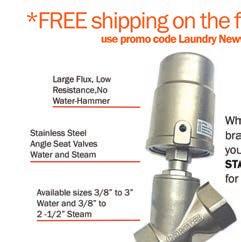
don’t know how many buildings have 11 feet of clear space above the boiler, but we do know that Parker Boilers require much less space than the “Big Foot” recommended clearance*. That adds plenty of room for your feed system, air compressor, chemical feeder, water softener, and air vacuum. So if you need a dependable, quality boiler, foruse in smaller spaces, just call your local Parker Boiler representative today.
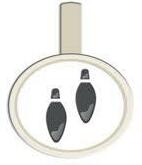
Never
24 DEC E MB E R 2017 | AMERICAN LAUNDRY NEWS www.AmericanLaundryNews.com ALN_Jr_half.indd 1 10/3/17 1:44 PM 5930 Bandini Blvd. Los Angeles, CA 90040 Tel:
323-727-9800 www.parkerboiler.com sales@parkerboiler.com
A Compromise For Quality or Safety
right! Big Foot is lurking out there, but not at Parker Boiler. Parker Boiler makes a line of small watertube boilers designed specifically for reduced floor space Even though the square footage that a “Big Foot”boiler may occupy is sometimes less; when consideration is given to manufacturer’s required clearance for maintenance and service, the Parker Boiler footprint will consume significantly less floor space. When a power burner is installed on the top of a vertical boiler, at least 11 feet of clearance may be required for removal and service of the burner and pressure vessel. We
Boiler, Blow-Off Tank, Chemical Feeder, Floor Sink, Water Heater, Air Compres-
Air Vacuum, Boiler Feed System & Water Softener TYPICAL 9’x10’ PARKER BOILER ROOM TYPICAL 9’x10’ BIG FOOT ROOM Better Value, Design, Packaging & Engineering “NEVER A COMPROMISE FOR QUALITY OR SAFETY” National Clothesline 10x15.25 - July Issue.indd 6/21/2017 5:00:46 PM ALN_Jr_half.indd 1 7/5/17 6:23 PM
DETAIL: Compare Clearance Requirements: For Parker Boiler and a Typical “Big Foot” boiler in a standard 9’x10’ boiler room.
sor,
Whyatt
Sinclair
Sotiroff
operations experience, primarily at Weyerhaeuser Corp., according to the company. He comes to SanMar from Merrill and Ring Forest Products, a large, family-owned forestry company where he served as CFO. Whyatt also managed finance and operations for a couple of Seattle-area start-up companies.
“Paul’s deep experience in strategic finance and planning will be an asset to our team,” says Jeremy Lott, president of SanMar. “He has the right mix of business acumen and entrepreneurial spirit to help drive our evolution as a family-owned company nearing our 50-year mark.”
Energenics adds UV product manager





NAPLES, Fla. — Wayne Schulze has joined Energenics as UV product manager to support its efforts to market and sell bacteria-zapping UV machines, the company reports.
Schulze brings more than 30 years of experience in UV equipment sales and design to Energenics in support of its recently introduced UV-Max machine to hygienically clean linen transport vehicles and interior spaces. With his UV expertise, Energenics says Schulze will
be a key design resource as the company expands its hygienic cleaning products.

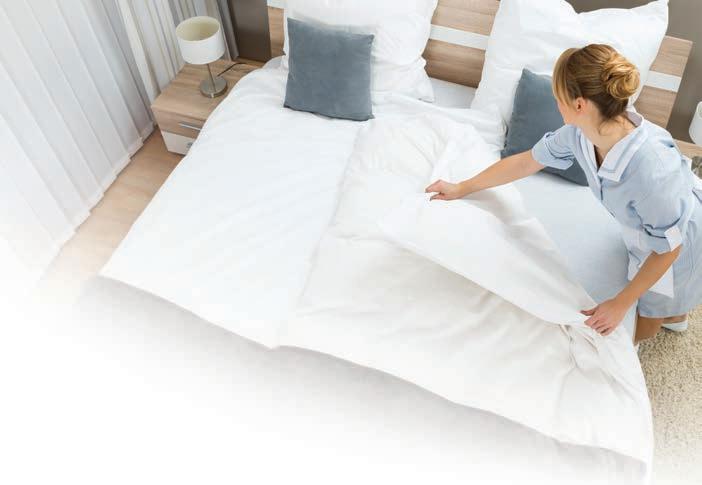
In addition to nationwide sales and marketing of UV products, Schulze’s duties also include sales responsibility for all Energenics products in the Western United States.
He will continue to reside in Southern California, the company says.
Kannegiesser ETECH expands customer service
MINNEAPOLIS — Six months after the announcement that Kannegiesser had acquired E-Tech and formed Kannegiesser ETECH, the company has expanded its customer service through several organizational changes, it reports.
First, in an internal company newsletter, it was noted that before the merger was finalized, a small group of Kannegiesser and E-Tech execs grappled with organizational issues, including “What Kannegiesser ETECH would look
like, what would define ‘us,’ what is our purpose and what are our core values?”
During the extensive discussions, it was clear that the focus on customer service was paramount, says Kannegiesser ETECH.
With this in mind, the company has named Tony Schult to a key management post: director of systems performance team.
“I am very happy to announce that the combined customer service team will be led by Tony Schult as director of systems performance,” Kannegiesser ETECH CEO Phil Hart says. “Tony has the unique skill set, personality traits and real-world experience that will give him the ability to lead the larger team in our pursuit of customer satisfaction.”
Schult will lead a wide-ranging technical support group that covers the entire portfolio of equipment offered by the company. Other personnel shifts:
• Mark Kimble was named to oversee the monorail systems performance team.
• Deric Wright was named service man-
ager leading the teams supporting the washing systems and also the garment and uniform systems.
• Tony Bell was named service manager leading the team supporting the flatwork finishing and folding equipment.

• Donnie Edmundson was named director of technical service. Bell and Wright will report to him. All members of the systems performance group ultimately will report through Tony Schult to COO Joe Schult.
• Tony Jimenez was named to oversee the equipment parts team.

Tony Schult says the changes are setting the foundation for growth and depth.
“We are all very excited to announce the integration of our service teams. Highlevel service is a companywide philosophy at Kannegiesser ETECH,” he says. “We will continue to focus on listening to our customers’ needs and providing solutions that result in long-term success for our customers, our team and our company— customer service and innovation at the forefront.” ALN
System Supercharge
OMNI Solutions supercharges your in-house laundry system, providing the LUX Hydroxyl System at no cost. Utilizing a safe, UV light bulb, the LUX Generator turns room air into earth’s strongest natural oxidizer: hydroxyl radicals. 500 times more powerful than hot water and bleach, the system achieves outstanding bright whites, and helps keep linens softer than traditional chemistry.
www.AmericanLaundryNews.com AMERICAN LAUNDRY NEWS | DECEMBER 2017 25
|
| 888.356.9111 THE BENEFITS OF LUX 55% 85% 5% 20% ALN_Tab_half.indd 1 10/13/17 1:48 PM
OMNI SOLUTIONS | 700 MOORE STREET
BARABOO, WI 53913
Schulze
Schult
Kimble Wright
Bell
Edmundson
Jimenez
WSI recognized with Ohio EPA Platinum Level award


LOVELAND, Ohio — Washing Systems (WSI) has been selected by the State of Ohio EPA as the first to be recognized with the state’s Platinum Level award for its ongoing efforts in environmental
stewardship, the company reports.
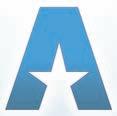

WSI was previously honored in 2014 with a Silver Level award under the Ohio EPA’s Encouraging Environmental Excellence (E3) program.
“We are very honored and humbled to receive the Platinum Level award for Encouraging Environmental Excellence from the Ohio EPA,” says Terry
Shoreman, CEO of Washing Systems. “We think of our products as a key success driver for our customers, the critical piece that allows laundry operators to deliver quality textiles to their customers.
“All of our associates at WSI take their responsibility to the environment and community very seriously. This dedication and
commitment shows both in the quality of our innovations and the collective impact we have on our community.”
Ohio’s E3 Program recognizes businesses, nonprofits and government agencies for going above and beyond compliance with requirements while demonstrating environmental excellence, the company says.
This is the first time a business has achieved Platinum Level, which honors organizations that have expanded their environmental programs beyond their own products and services to make a positive impact on the surrounding community.
“Washing Systems has made a commitment to be environmentally sustainable and, through their research and development efforts, deliver innovative products that clean better, more efficiently and without chemicals that have harmful effects on human health and the environment,” says Ohio EPA Director Craig W. Butler.

“Their leadership in the area of environmental stewardship and their success are both measurable and important. I am proud to recognize this outstanding Ohio business as one of the first to achieve our Platinum Level E3 Award.”
In recognizing WSI with its Platinum Level award, the Ohio EPA noted its innovative products and processes, specifically designed to eliminate chemicals of concern, reduce energy and water consumption, and increase productivity.

These innovations include the patent-pending process ClearPath , a completely NPE- and phosphate-free portfolio of cleaning products, and the elimination of millions of pounds of chemistries removed from the environment through its Spectrum™ and Structure products, the company says.
WSI says it carries the U.S. EPA Safer Choice designation on five of its cleaning solutions.


HLAC board of directors names Bushman president
PLAINFIELD, Ill. — The board of directors of the Healthcare Laundry Accreditation Council (HLAC) has named Bradley J. Bushman its president, effective immediately, HLAC reports. Bushman is assuming the duties of board president of HLAC through the 2020 term.
HLAC is a nonprofit organization formed for the purpose of inspecting and accrediting laundries processing healthcare textiles for hospitals, nursing homes and other healthcare facilities.


Bushman, an HLAC board director for several years, is vice president of technical affairs of Standard Textile Co., Cincinnati, according to HLAC. He succeeds John Scherberger, who has been board president since January 2016.
A 35-year veteran of the industry, Bushman has been an elected U.S. delegate to the European
26 DECEMB E R 2017 | AMERICAN LAUNDRY NEWS www.AmericanLaundryNews.com
facebook/ americanlaundrynews Like our Facebook page Share our content Comment: Tell us what’s on your mind LIKE 1017aln_House Facebook_jr page.indd 1 9/16/17 8:42 AM
Union (EU) and an AAMI committee member, developing international standards related to textile services. HLAC says he has used this knowledge to help enable its standard to be globally relevant.
At Standard Textile, where he has worked for 29 years, Bushman’s responsibilities include operations at the C.O.R.E. laboratory facilities, regulatory affairs and managing the technical services team, which works directly with textile service providers to optimize operational performance, logistics and quality results.
Bushman says, as HLAC president, he intends to:
• Continue to have a positive impact on hospital HAIs through promoting hygienic laundry practices and HLAC accreditation of healthcare laundry service providers.
• Begin the review and updating process for the HLAC healthcare standard to keep it current with advancements in technologies and new biological threats.
• Initiate training and educational programs focused on hygienic practices for textile service providers.


• Engage with the best and brightest within the industry to develop best practices for hygienic processes used within the textile services industry.

“I have long been a tremendous advocate of HLAC accreditation,” Bushman says. “I look forward to enhancing HLAC’s brand and image as the preeminent accreditation organization for the textile services industry.”
Jensen organizing exhibition: Jensen Performance Days
PANAMA CITY, Fla. — Jensen Group will skip EXPODetergo 2018 to focus on its own exhibition, Jensen Performance Days, the company reports.
Jensen Group is organizing the full-week exhibition on the island of Mallorca to showcase its latest innovations and present new solutions for data management and material handling. The exhibition will take place in the second quarter of 2018.
Jensen Performance Days is being organized in response to customer requests, says CEO Jesper Munch Jensen.
“In the past few years, a number of customers have asked us to organize an in-house exhibition,” he says. “The time that is available at exhibitions is usually very short, and our customers also expressed the wish to have in-depth discussions with our
technology experts.”
He says that during seven days on the island of Mallorca, in Spain, laundries from all over the world will be able to discover the company’s newest solutions in a private setting, with plenty of time and opportunity for extensive discussions with experts from the company’s global technology centers.
In the central show area, he says the company will present equipment, material handling and data management solutions for laundries processing healthcare linen, hospitality linen, garments and mats.
“We will introduce new products and exhibit some of our wellproven machines,” Jensen says. Adjacent to this extensive area will be the conference section, where he says visitors can participate in a number of lectures and presentations.
“We respect our own traditions and will round off each day with a Jensen party,” he adds.
nental Girbau Inc. recently partnered with Hills Commercial Laundry in Anchorage to provide on-premises laundry equipment throughout Alaska, the company reports.
As a result, Continental says Hills Commercial Laundry will represent the company’s complete line of on-premises washerextractors, drying tumblers and ironers.
OSHKOSH, Wis. — Conti-


Hills Commercial Laundry carefully examines commercial and on-premises laundry operations to provide laundry solutions that boost productivity and efficiency, according to owner
Rod Hill.
“We help with laundry development, renovation, efficiency, equipment, parts and service,” he says.
“The Hills Commercial Laundry team brings 60 years of experience, premium services to new and existing customers throughout their service area,” says Joel Jorgensen, Continental vice president of sales. “They work closely with fire departments, vet clinics, nursing homes, hotels, hospitals, clinics, fire departments and commercial laundries to improve laundry throughput and efficiency.” ALN
www.AmericanLaundryNews.com AMERICAN LAUNDRY NEWS | DECEM BER 2017 27
Continental Girbau partners with Hills Commercial Laundry
Most
Industry
Laundry Operations and Management FIRST EDITION $95 members / $150 nonmembers Multiple-copy purchase discounts available 877.770.9274 or 703.519.0029 • info@trsa.org www.trsa.org/store Laundry Operations and Management provides
you
uniforms
items. Easy-reading, illustrated 200-page text describes equipment, supplies and techniques for every stage of laundering: Soil Sorting ð Washing ð Drying/Finishing ð Packout ð Delivery Plus an industry history and chapters on maintenance and textiles. Laundry Operations & Management
the
TRSA
“Individuals new to the business receive a great base to begin their careers. Veterans nd answers to questions that would be very hard to gure out if they didn’t have this resource.” —Tim Radtke, CPLM, Plant Manager, Morgan Services, Chicago ALN_Jr Page.indd 1 10/12/17 11:38 AM
Bushman The
Comprehensive Guide to
Operations
an overview of all aspects of laundry operations: a primer on procedures, technologies and transactions of production, sales and service. It is the only resource that explains how every manager and employee a ects every stage in the laundry process. Nowhere else will
nd as many insights for industry newcomers and veterans alike about industry best practices for processing linens,
and other
is
o cial text of the
Production Management Institute (PMI).



















28 DECEMBER 2017 | AMERICAN LAUNDRY NEWS www.AmericanLaundryNews.com Classified Advertising POSITIONS AVAILABLE The Griffin Group, Inc. “Recruitment Specialist” Need to FILL a position? Call Deana Griffin 888-235-2365 www.thegriffingroup.cc deana@thegriffingroup.cc ® PARTS FOR SALE WASHEX PARTS Hard-to-find Washex parts, on-site rebuilding, tech support. LAUNDRY PARTS CENTER 800-352-4492 Fax: 305-827-3991 PARTS, PARTS, PARTS Huge stock of parts for most laundry equipment & boilers. Also traps, valves and lubricants. Overnight delivery. Steiner-Atlantic, 800-333-8883 Fax: 305-751-8390 parts@steineratlantic.com www.steineratlantic.com EQUIPMENT FOR SALE EQUIPMENT FOR SALE NEW FOLDERS & SELF CONTAINED IRONERS 68” - 138” Wide WWW.JBILAUNDRYFOLDER.COM AMKO AMERICA INC. Parts, Supplies, Service Remanufactured Finishing Equipment AmkoAmerica@gmail.com 561-863-9696 DISTRIBUTOR OFFERINGS USED CARTS WANTED Call Craig Lloyd toll free at 877.295.5693 between 9 a.m. – 9 p.m. EST. Please visit www.laundrycareers.com to review current industrial/institutional laundry management openings. ADVANCE YOUR CAREER U.N.X. INCORPORATED“ ” grow & expand U.N.X.! U.N.X. INCORPORATED DESCRIPTION FOR NEW OR USED LAUNDRY EQUIPMENT, DM IS YOUR SOURCE FOR ALL YOUR NEEDS Challenge Reconditioned Pacesetter Gas Dryers (1) Kemco (2) Stainless Steel Storage Tank 1500 gallon and Two Pass Heat Reclaimer Pik-Quik Sheet Sorter (1) Braun Return to Feed SPF Chicago Skyline 4-lane with stacker (2006) Skyline Mini (2009) with Stacker Jensen Reconditioned 2-Roll 36 Steam Ironer Chicago Edge Spreader Feeder (2001) Milnor 30022V8Z – 60lb washer (2012) Milnor 30022V6J – 60lb washer (2008) Milnor 72072 500lb Gas Pass-Through System Dryers (2006) (2) Milnor 140lb & 100lb Solid Mount Washers (2001) Unipress CSB, ABS Sleever & 3CT2 Collar Cuff Unipress CRD Rotary Double Buck For Pricing call Ron Hirsch 516.938.4300 • 516.315.7426 Hicksville, NY • www.directmachinery.com Stanco Industries, Inc. Serving The Textile Trades Since 1970 800-932-3769 k for Mike or Deb KEEPING IT GREEN SINCE 1970 WE ARE LOOKING FOR THE FOLLOWING EQUIPMENT: WASHING • DRYING • FOLDING FEEDING • IRONING • FINISHING MATERIAL HANDLING • BOILERS CONTINUOUS BATCH WASHING STACKERS • CART DUMPERS DON’T BE LEFT WITHOUT POWER Emergency Generators Available 50KW to 1000KW Natural Gas & Diesel Please visit our updated website: www.stancoind.com E-mail: buyer@stancoind.com Chicago 232 Imperial 120” Gas Ironer Chicago Tristar 32 PCS 120”Steam Ironer/Folder/Stacker Chicago Tristar 28 PCS 120” Gas Ironer With Spreader/Feeder Chicago G024-120R 120” Gas Ironer With Front/Rear Return Chicago Tristar 24 PCS 120” Gas Ironer Chicago GL13-120R 120” Gas Ironer With Front/Rear Return Comet Executive 66” Gas Ironer (Qty. 3) Chicago Skyline S-13 Cross Folder With Stacker/Conveyor Chicago “Air Express Chicago” Small Piece Folder Cissell 75 LB Soft Mount Washer Milnor 140 LB Washer (Qty. 2) Milnor 60 LB Washer (Qty. 2) Milnor 75 LB Gas, Reversing Dryers (Qty. 5) Milnor 75 LB Steam Dryer View photos of entire inventory at www.washburnmachinery.com 800-245-8425 Keepin’ it clean for over 65 years! WANTED USED LINEN / LAUNDRY BULK CARTS roadrunnerwm.com/equipment 412.430.0037 RoadRunner Recycling wants to purchase used linen/laundry bulk carts on wheels with cut out fronts. Approximate Size : L x W: 48ʺ x 28½" and Height: 66" 2003 Chicago Skyline Mini 2003 Chicago King Edge w/Vac 1993 Chicago 48” Ironer 2009 Chicago Skyline 4-Lane (2) (2006/2007) 140lb Milnor W/E 2005 130lb Milnor Conway (2) 450lb Lavatec Dryers We have a huge inventory of BRAUN PARTS - visit out parts page or call 800/925-3236 if you don’t see what you are looking for. Equipment is priced to sell! www.ineedjpequipment.com www.ineedjpequipment.com “Expect Excellence” WIRE The latest news, straight to your inbox, 2X a week THE

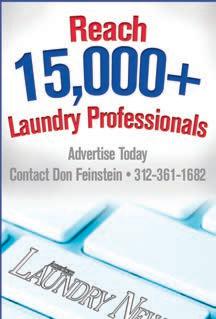











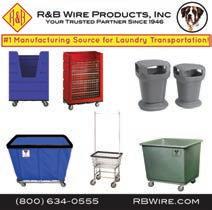

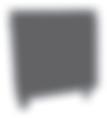










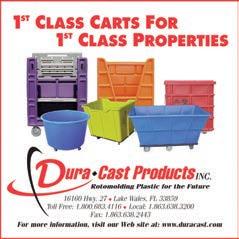







www.AmericanLaundryNews.com AMERICAN LAUNDRY NEWS | DECEMBER 2017 29 Source Directory A convenient guide to sources of products and services APPAREL FINISHING CARTS, TRUCKS & BASKETS Source Directory listings in American Laundry News are sold on an annual basis at the following rates: All Major Credit Cards Accepted 2017 Listings Regular Boldface All Caps Four Line Listing per Year $890 $1,115 $1,115 Display and additional line rates available upon request CARTS, TRUCKS & BASKETS CARTS, TRUCKS & BASKETS ● Folder Stackers ● Tunnel Finishers ● Cart Washers ● Pressing Equipment ph: 704.483.9316 sales@leonardautomatics.com http://leonardautomatics.com leonardautomatics.com/t-shirt_c Free T-Shirt Financing Available • Laundry/Bushel Trucks • Exchange/Flare/Security Carts • Spring Lifts Diversified Plastics, Inc. South Carolina & Georgia • 800.768.7636 sales@dpirotocarts.com • dpirotocarts.com On-Time Delivery & Quality Service! BEST LAUNDRY TRUCKS & CARTS BEST LAUNDRY TRUCKS & CARTS M c C LURE INDUSTRIES, INC. 800-752-2821 • www.mcclureindustries.com email: kim@mcclureindustries.com Sani-Trux is the only molded cart to pass rigorous independent laboratory testing for NFPA fire codes Made of durable fiberglass making the cart life at least twice that of a poly cart Easy to maneuver even in tight spaces Built with quality components to last years longer than other carts Visit our website for other models and avaliable options. We sell direct to all parties! WWW.MITPOLYCART.COM For more information, visit our Web site at: www.duracast.com Please call and reference promotion #17ALN to receive your special freight rate. Call 800.829.4535|questions@MODROTO.com | MODRoto.com 54P-40E We Put More Into Our Carts So You Can, Too! SPRING-LOADED SAFETY TRUCKS Show your commitment to worker safety with ergonomic, spring-loaded carts and trucks from the spring-loaded technology leader. Our signature, rotationally molded and vinyl-covered spring platforms rise as goods are removed to keep work positioned at the right height. See action video at MODRoto.com and call for free quote.






























30 DECEMBER 2017 | AMERICAN LAUNDRY NEWS www.AmericanLaundryNews.com Source Directory A convenient guide to sources of products and services FLATWORK IRONERS Knowhow In Action Your Tingue rep is a fully trained master of finishing equipment operation, maintenance and installation. Call for: • Pads, covers, belts, waxes, tapes and more • Carts, trucks, baskets and bags • Parts, rebuilds and repairs 800.829.3864 www.Tingue.com MODRoto.com TBR-Associates.com C & W EQUIPMENT (800) 443-3573 FLATWORK IRONER SPECIALISTS REMANUFACTURED IRONERS: Super Sylon Sylon Hypro’s Super Pro Jensen SS700 SS800 Ultima Lavatec UPGRADE KITS: Chain Drive Conversion Vacuum Systems Herringbone Conversion Canopies Inverters Side Covers Roll Springs Jensen Drives SUPPLIES: Aprons Pads Covers Belts Waxes Cleaners PARTS/REPAIRS: All Brands New/Refurbished/Hard to Find COMMITTED TO EXCELLENCE Pellerin Milnor Corp. P.O. Box 400, Kenner, LA 70063 504-467-9591, Fax: 504-468-3094 www.milnor.com DRYERS – 100 POUNDS OR MORE Pellerin Milnor Corp. P.O. Box 400, Kenner, LA 70063 504-467-9591, Fax: 504-468-3094 www.milnor.com CLEAN CYCLE SYSTEMS 960 Crossroads Blvd., Seguin, TX, 78155 800-826-1245 • CCsystems@tqind.com www.cleancyclesystems.com DRYERS – 100 POUNDS OR LESS LINT COLLECTORS & FILTERS MAT ROLLERS DRYER BOOSTER & EXHAUST FANS www.energenics.com ENERGENICS CORPORATION TALK TO OUR DESIGN AND ENGINEERING STAFF ABOUT YOUR NEEDS 1470 Don St. • Naples, FL 34104 • 800-944-1711 ›› Our In-Line Lint Filter mounts inside, saves space! ›› OPL Duct Mounted Lint Filters 1,000 to 2,700 CFM ›› Fiberglass or Stainless Steel Dry Filters ›› Hundreds Sold Annually Source Directory listings in American Laundry News are sold on an annual basis at the following rates: All Major Credit Cards Accepted 2017 Listings Regular Boldface All Caps Four Line Listing per Year $890 $1,115 $1,115 Display and additional line rates available upon request HEALTH CARE LINEN TRANSPORT CARTS “In-House” or “Over-The-Road Transport” Ergonomic Aluminum - Tough Fiberglass – Ultimate Stainless ALL SIZES & CUSTOM C APABILITIES 800-826-1245 | www.tqind.com | TQcarts@TQind.com America’s #1 Trusted Source Since 1961! HEALTHCARE LINEN TRANSPORTS CART-WASHING SYSTEMS www.energenics.com ENERGENICS KARTWASHERS FULLY AUTOMATIC KARTWASHER PREMIER W/TOUCHPAD 1470 Don St. • Naples, FL 34104 • 800-944-1711 Designed to wash and sanitize all popular laundry carts • Automatic two minute cycle • Dries and sanitizes • Minimum water useage Concentrates wash effectiveness on the cart interior Fast automatic washing, sanitizing and drying insure optimum cleaning • 15 second detergent wash and sanitizing rinse cycle • Adjustable automotive car wash style drying 1116aln_Energenics Cart Washers SD.indd 1 9/27/16 3:30 PM What Every Laundry Needs In A Cart Washer: M c C LURE INDUSTRIES, INC email: kim@mcclureindustries.com 800-752-2821 • www.mcclureindustries.com A cart washer that works continuously for 15-20 years. The ability to install your cart washer in a cross-contamination barrier wall. A cart washer that really, truly cleans each cart of bio-contaminents inside and out. One that uses existing utilities no remodel costs. Time selectable efficient cycles that use a minimum amount of water. www.olekbelts.com 1-800-869-2683 Free www.olekbelts.com We’re your flatwork finishing and conveying O.E.M. Belt Match H.Q. Get the real thing for a Lot less $$$. O.E.M. Needlefelt Ironer Pads too! Better Belts, Better Prices, Better Service Visit our Website or Call 1-800-869-2683 For free, no obligation, price quotations and for your Free copy of our Product Catalog with over 40 samples. Ironer pads, covers, aprons, guide tapes, carts, slings, cleaners, waxes & more… FLATWORK SUPPORT FEEDER AND FOLDER BELTS www.superiorbands.com 1-800-227-2906 Sales@superiorbands.com Feeder/Folder Belts Superior Bands, Inc. Buy Direct OPL-Series DLF-500 Lint Lasso 1,000-10,000 CFM Established: 1991 4,000-35,000 CFM Established: 1985 4” to 18” Duct Established: 2011 www.cleancyclesystems.com • 800 . 992 . 0697
Gardner Machinery Corporation P.O. Box 33818, Charlotte, NC 28233 Ph.: (704)372-3890; Fax: (704)342-0758 www.gardnermachinery.com



PRESSES – EXTRACTION
Pellerin Milnor Corp.
P.O. Box 400, Kenner, LA 70063 504-467-9591, Fax: 504-468-3094 www.milnor.com
SMALL-PIECE FOLDERS

Pellerin Milnor Corp.
P.O. Box 400, Kenner, LA 70063 504-467-9591, Fax: 504-468-3094 www.milnor.com
Pellerin Milnor Corp.
P.O. Box 400, Kenner, LA 70063
504-467-9591, Fax: 504-468-3094 www.milnor.com
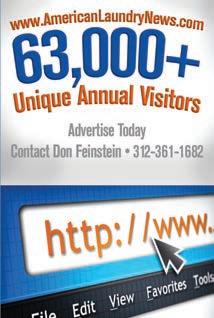

Pellerin Milnor Corp.




P.O. Box 400, Kenner, LA 70063 504-467-9591, Fax: 504-468-3094 www.milnor.com




www.AmericanLaundryNews.com AMERICAN LAUNDRY NEWS | DECEM BER 2017 31 Source Directory A convenient guide to sources of products and services PARTS PARTS PARTS & SUPPLIES • Door Handles • Door Locks • Print Boards • Bearing Kits • Drain Valves • Shocks • Heating Elements • Inlet Valves and more! QUALITY LAUNDRY PARTS, GREAT PRICES For questions and custom orders email info@FrontecStore.com (941)726-0808 Handles • Drain Valves • Shocks • Heating Elements • Inlet Valves and more! questions and custom ordersFrontecStore.com (941)726-0808 CINCINNATI LAUNDRY EQUIPMENT We stock all the parts you need! We have something for everybody! Parts for All Major Manufacturers 2648 Spring Grove Avenue Cincinnati, OH 45214 Phone: 513-542-5000 • Fax: 513-542-5022 www.cincinnatilaundry.com cle@cincinnatilaundry.com Your #1 AJAX Source! AJAX • CISSELL LAVATEC • ALLIANCE IPSO • HUEBSCH JENSEN HYPRO/SUPER SYLON HOFFMAN • VOSS PERMAC
–
– 100
WASHERS – CONTINUOUS BATCH WASHER-EXTRACTOR
100 POUNDS OR LESS WASHER-EXTRACTOR
POUNDS OR MORE
Source Directory listings in American Laundry News are sold on an annual basis at the following rates: All Major Credit Cards Accepted 2017 Listings RegularBoldface All Caps Four Line Listing per Year $890 $1,115 $1,115 Display and additional line rates available upon request Company Page Company Page INDEX OF ADVERTISERS A.L. Wilson Chemical Co. .............................................................................................................................................9 ADI American Dawn 5, 17 BDS Laundry Systems 22 Direct Machinery Sales Corp. 28 G.A. Braun 21 Girbau Industrial 7 The Griffin Group Inc. 28 J.P. Equipment 28 Kannegiesser ETECH 19 LaundryCareers.com 28 Lavatec Laundry Technology 32 Monarch Brands 10, 11 Norchem Corp. ............................................................................................................................................................ 13 OMNI Solutions 25 Parker Boiler 24 Pellerin Milnor 3, 15 PSP Industrial 28 R.W. Martin & Sons 24 Roadrunner 28 Stanco Industries 28 TRSA 27 Washing Systems Inc. 23 Washburn Machinery Inc. 28
MATERIAL HANDLING / CONVEYORS

























































































 BY BILL BROOKS
BY BILL BROOKS


































































 BY MATT POE, EDITOR
BY MATT POE, EDITOR















































































































